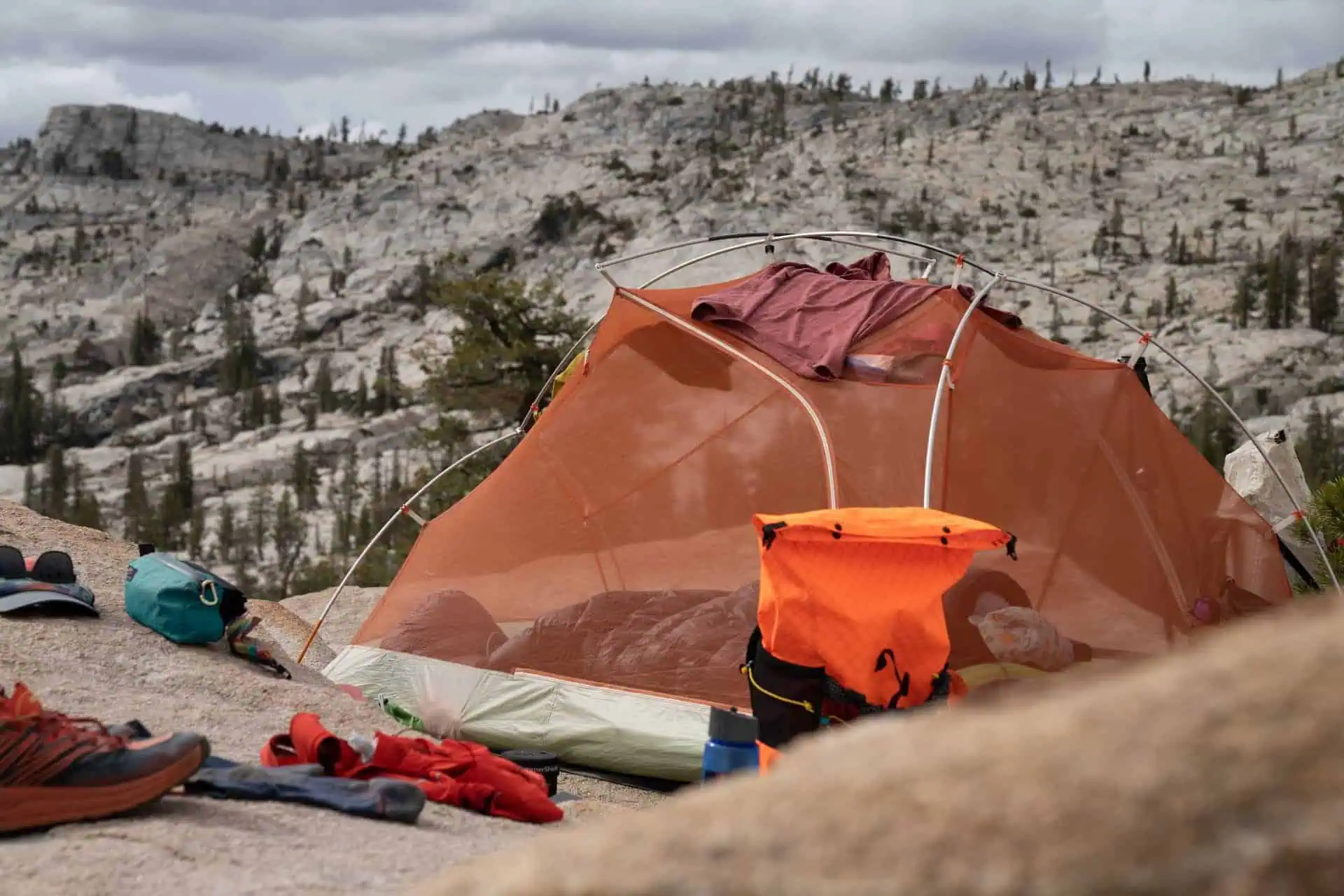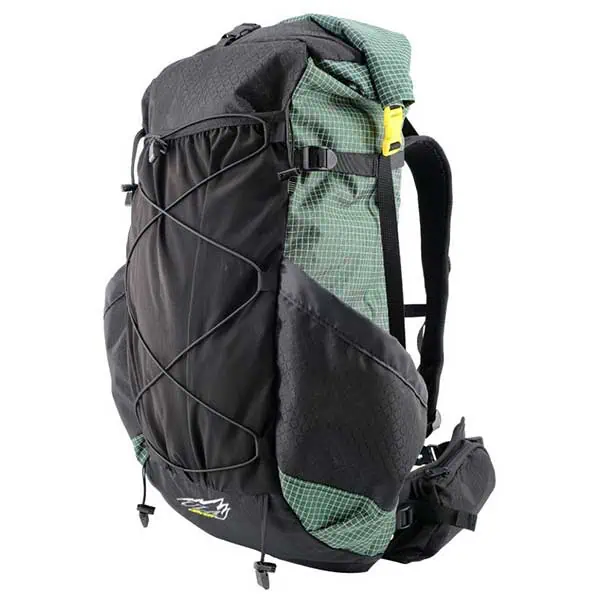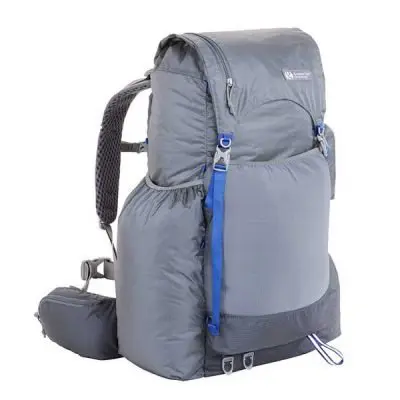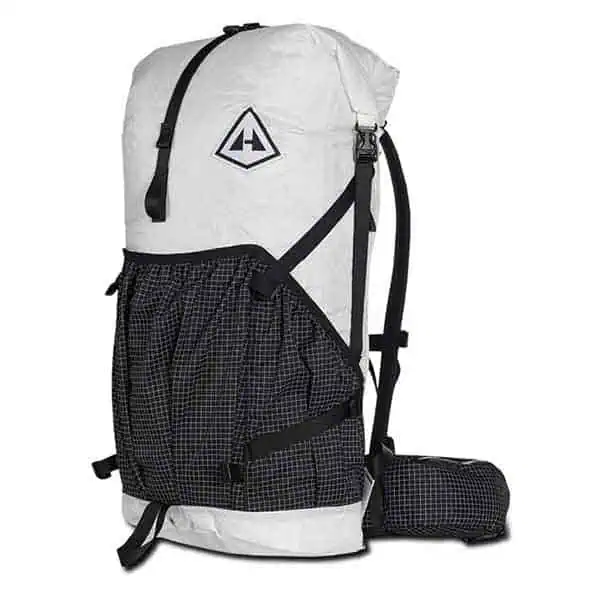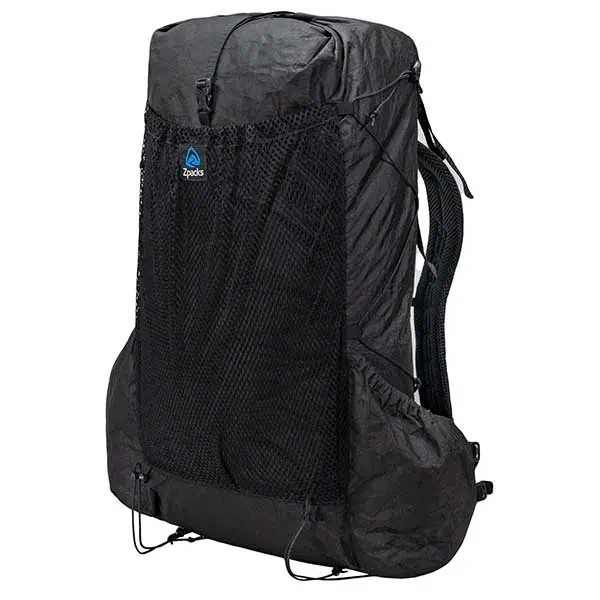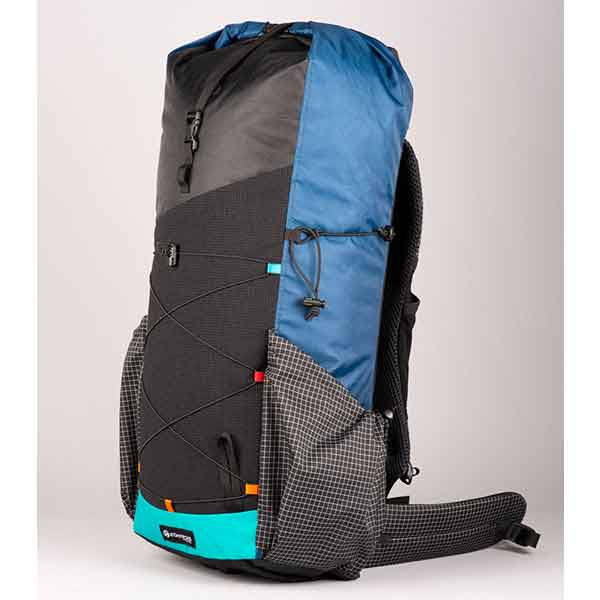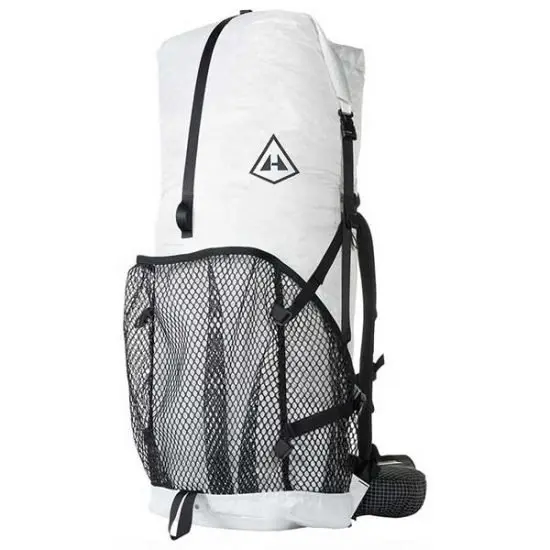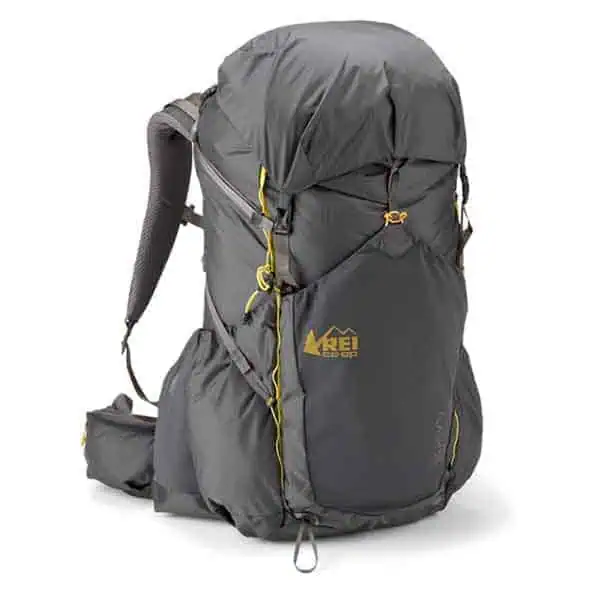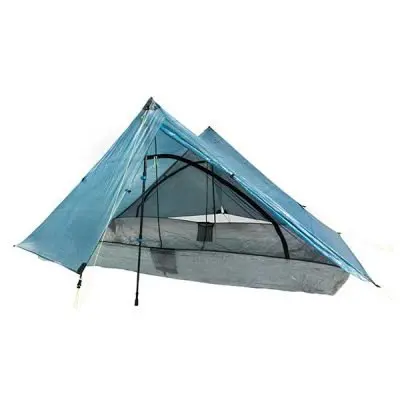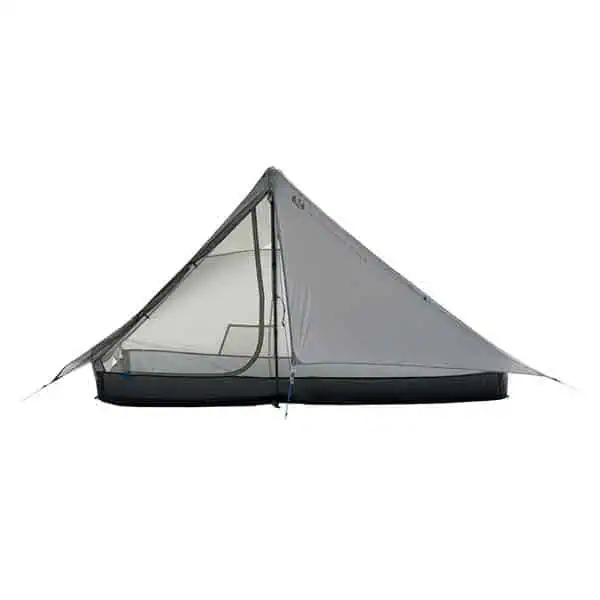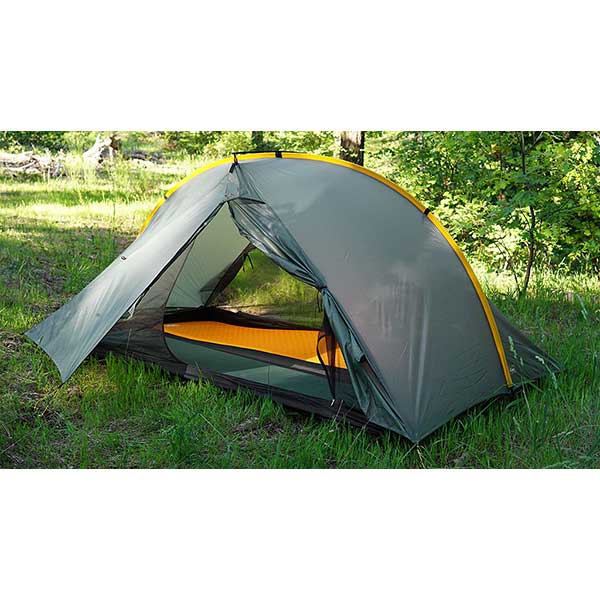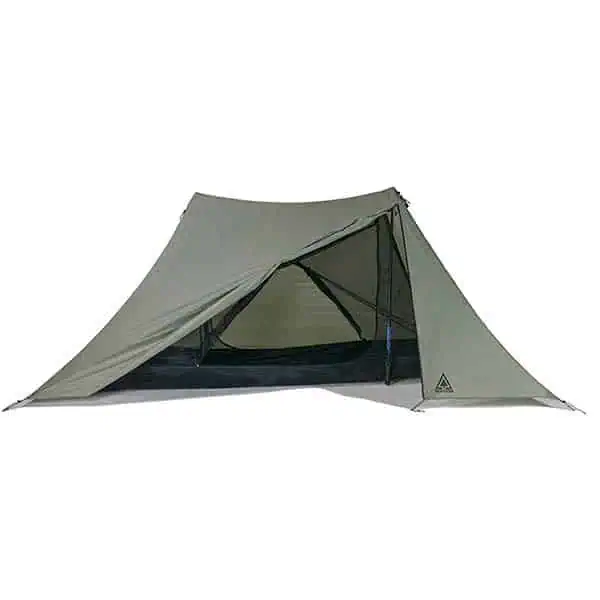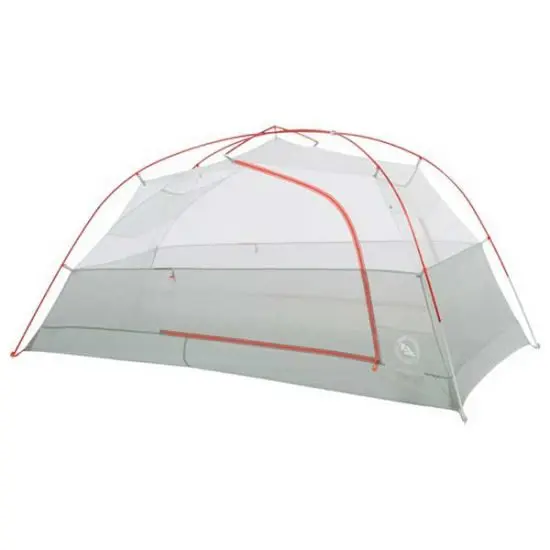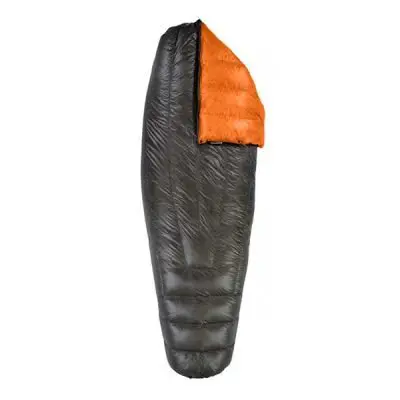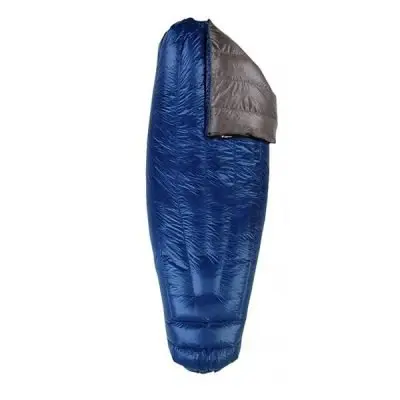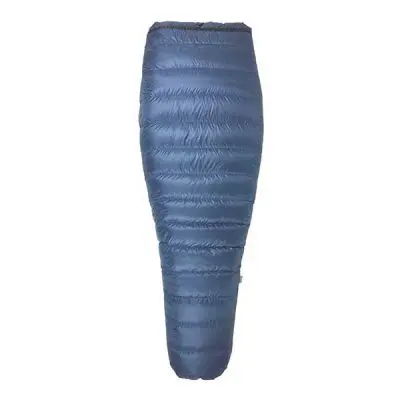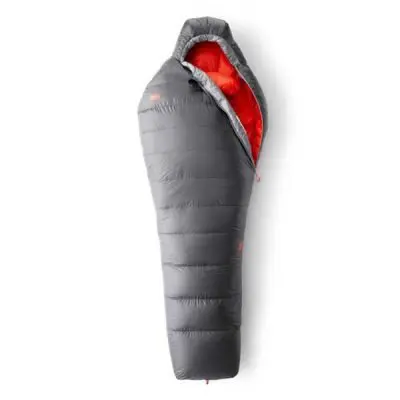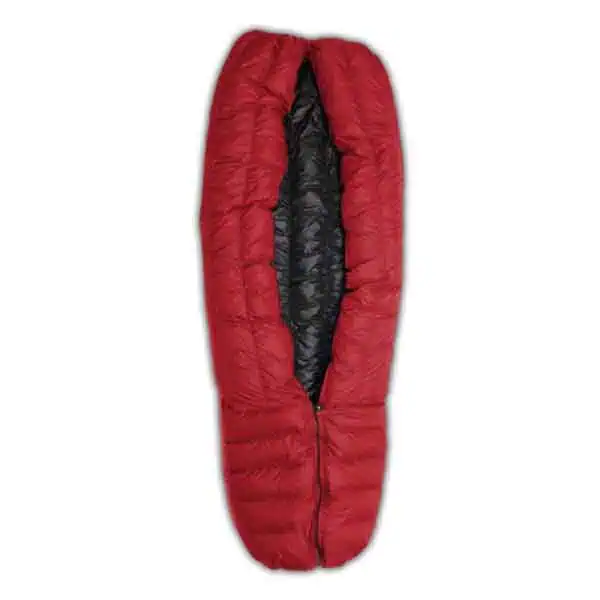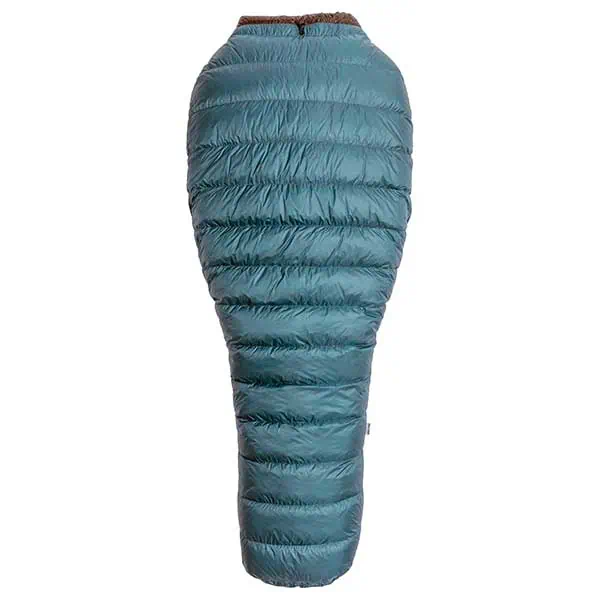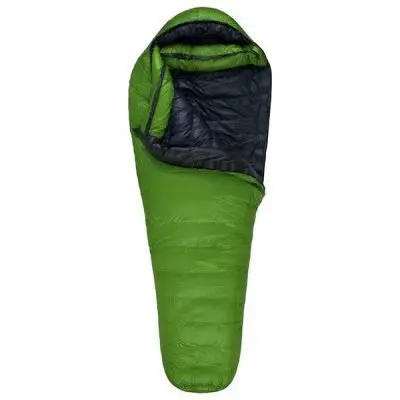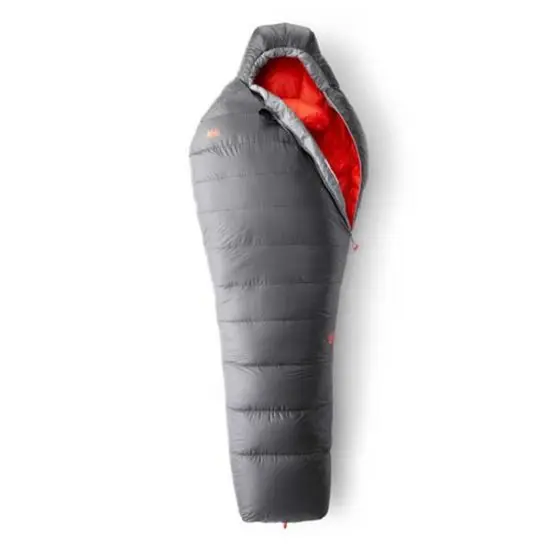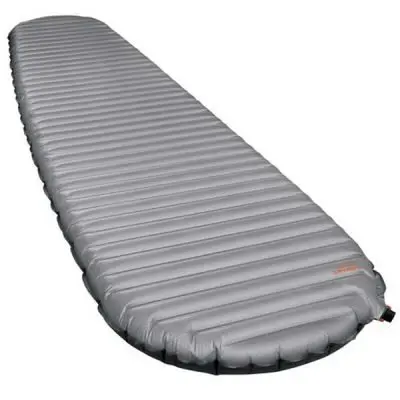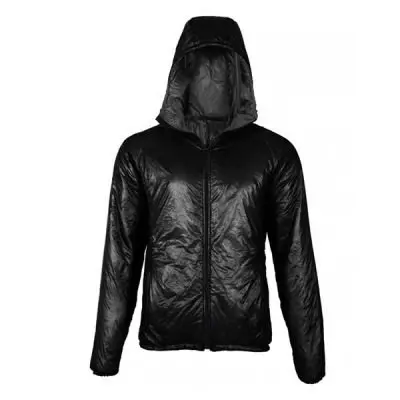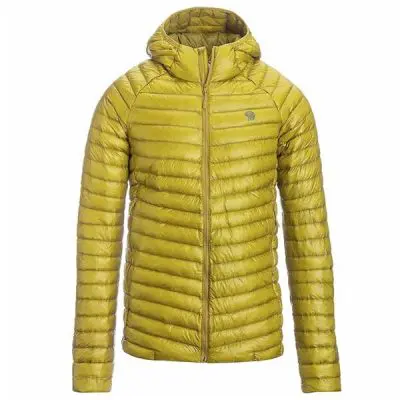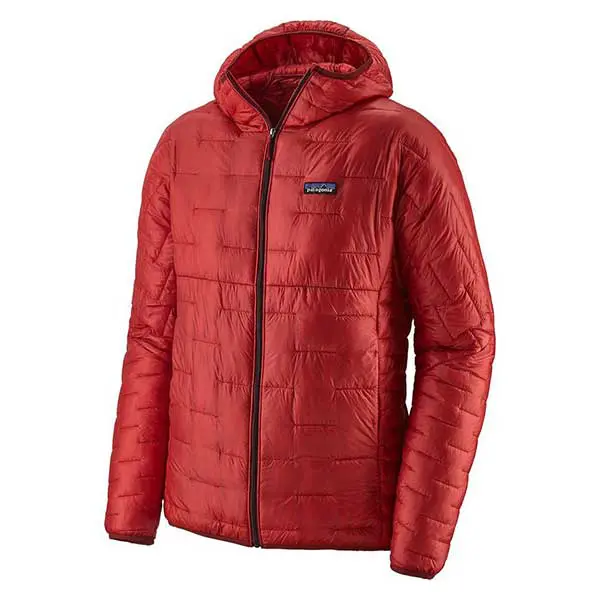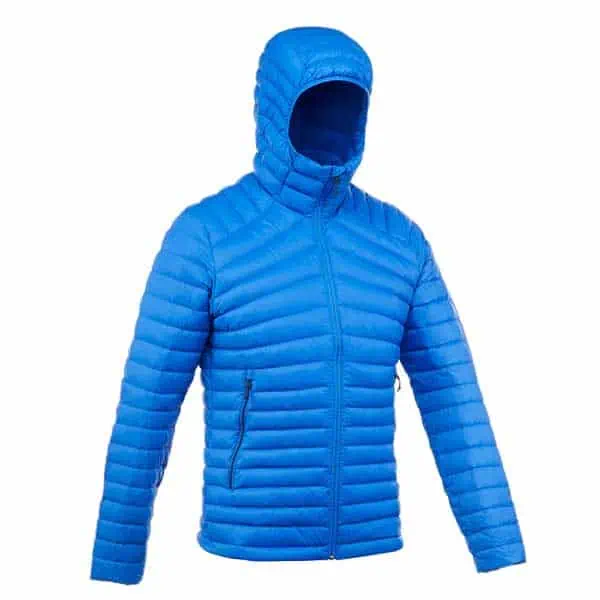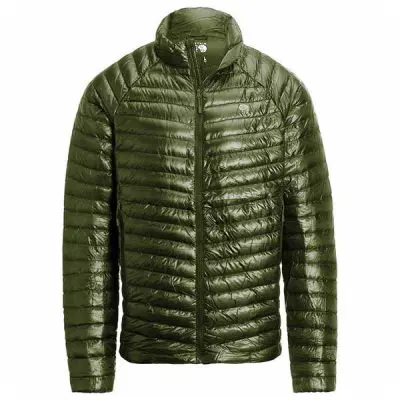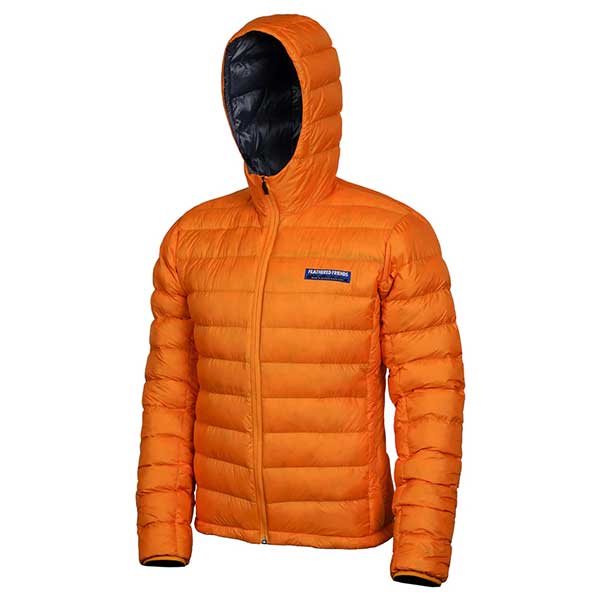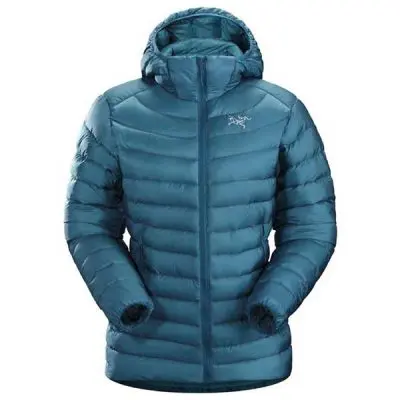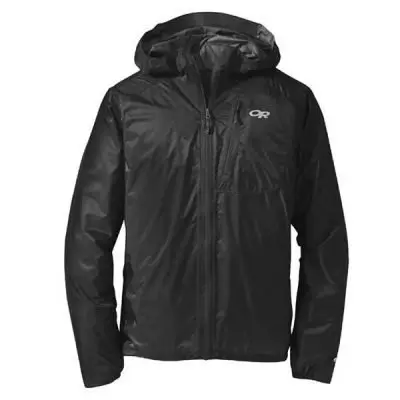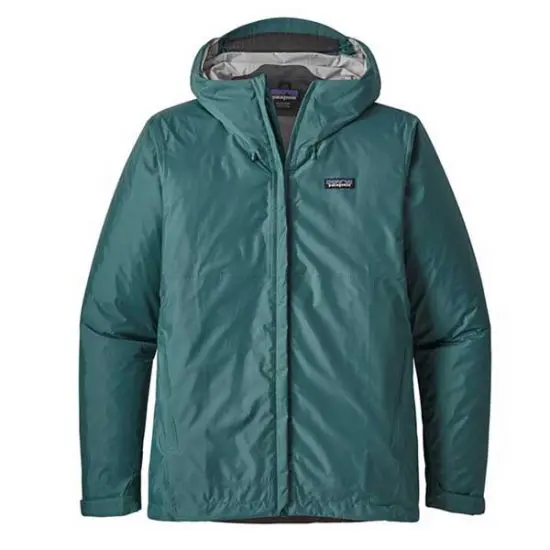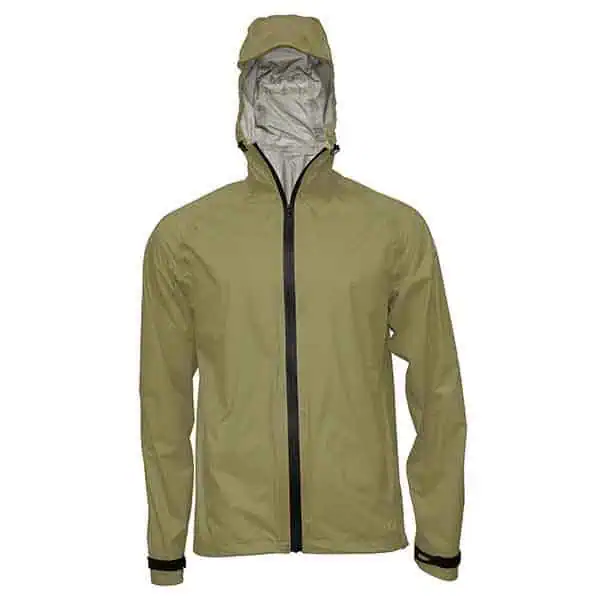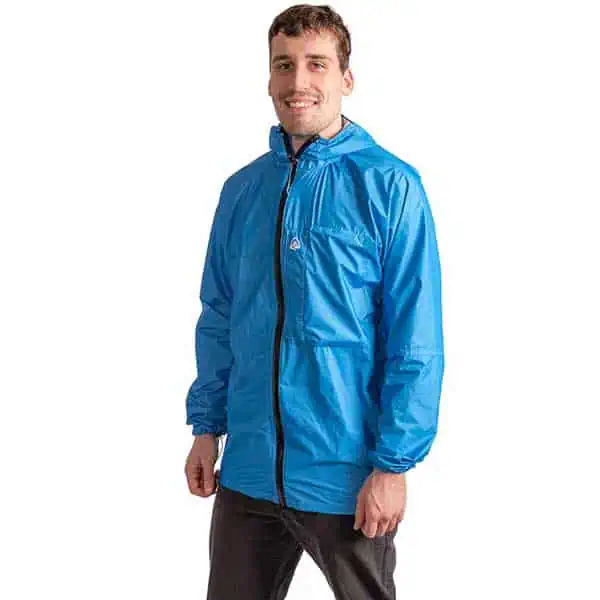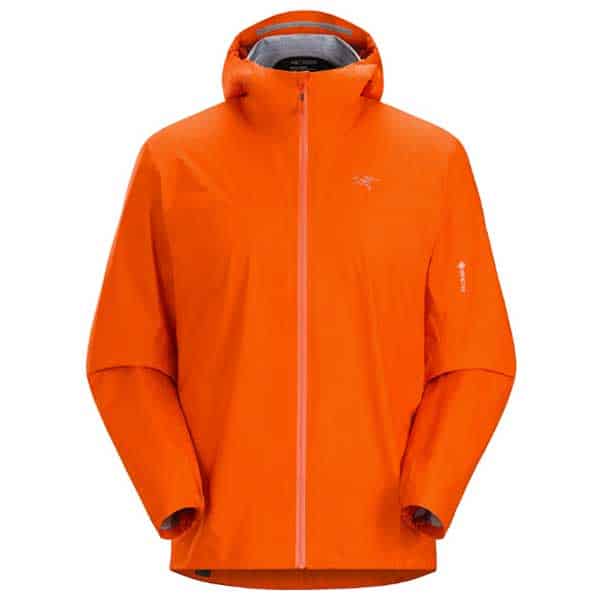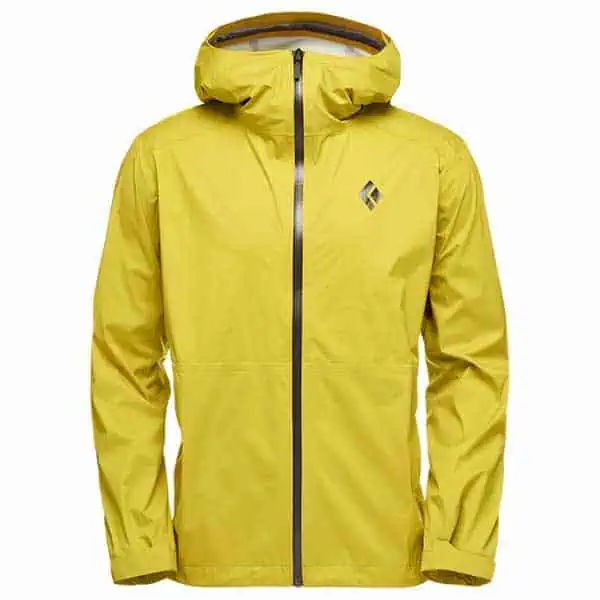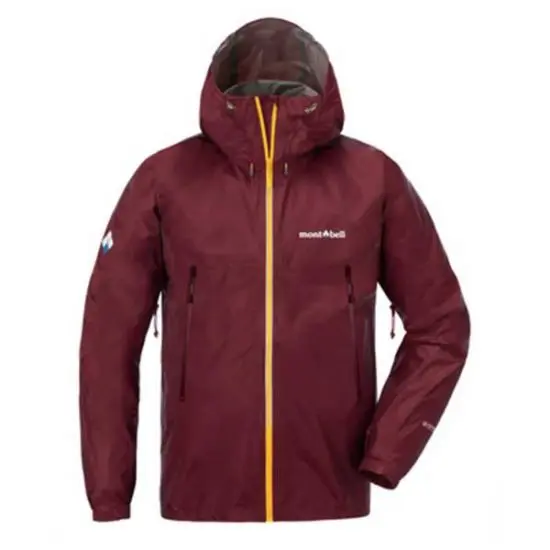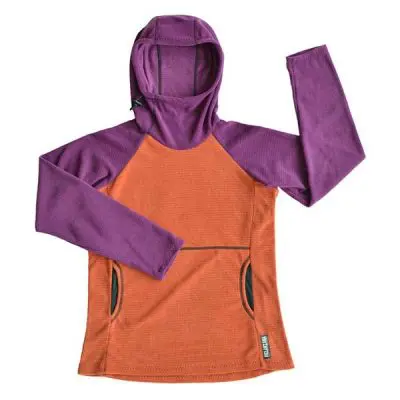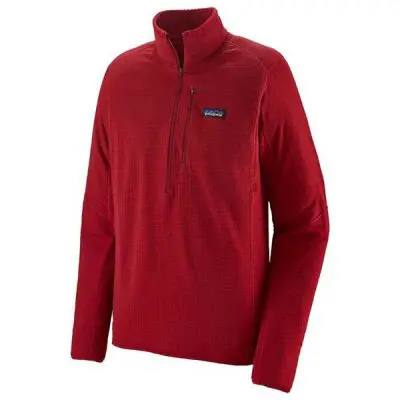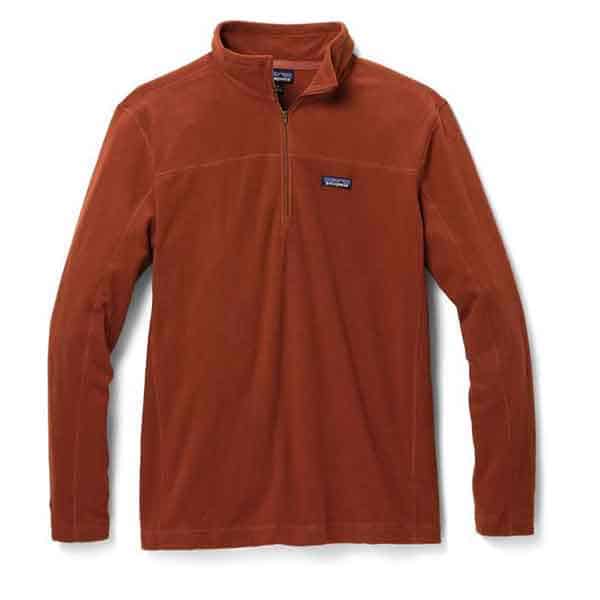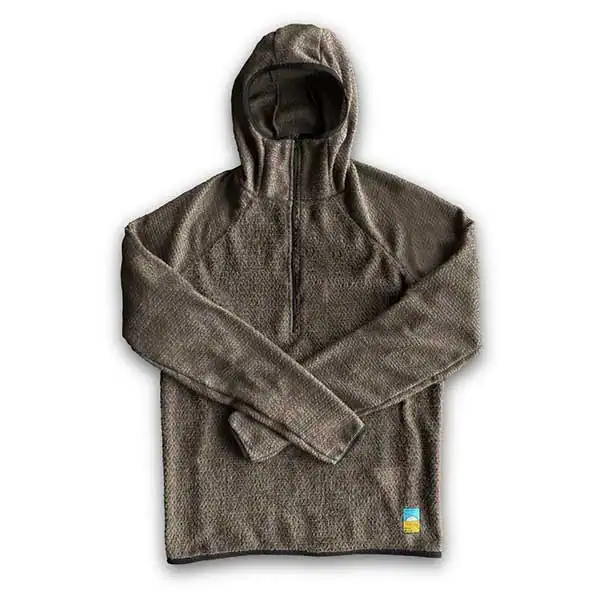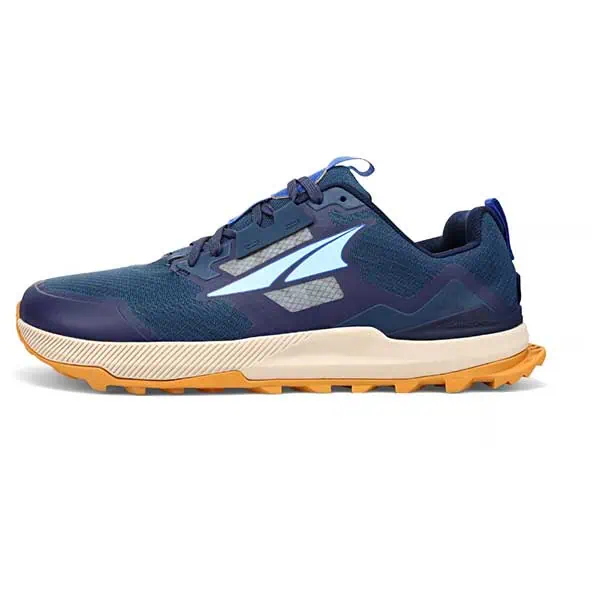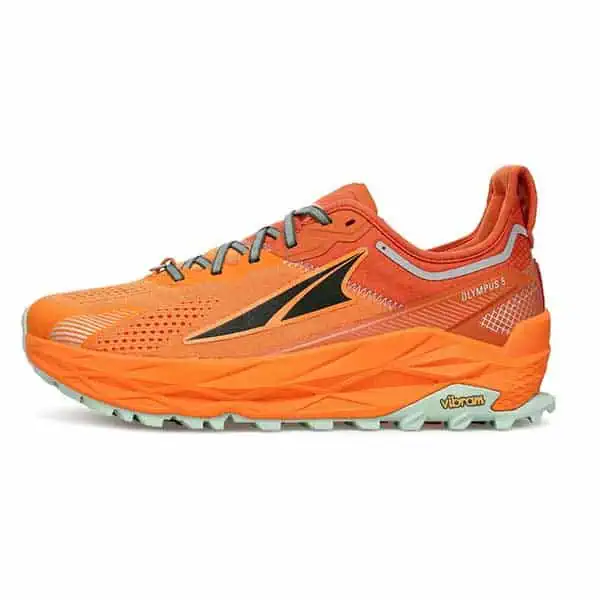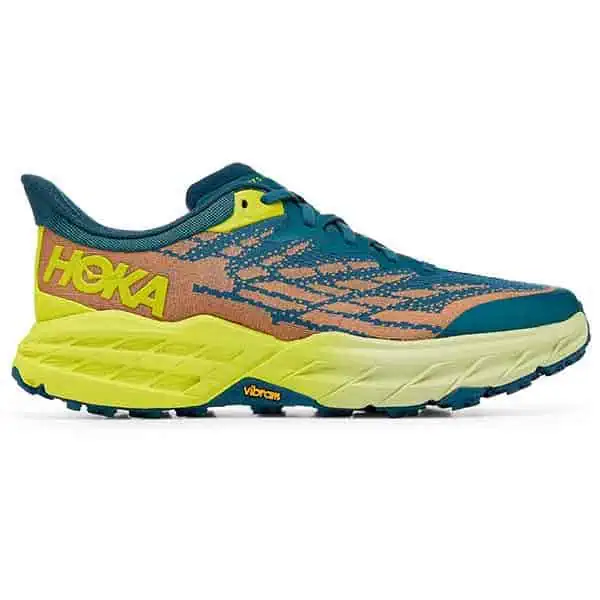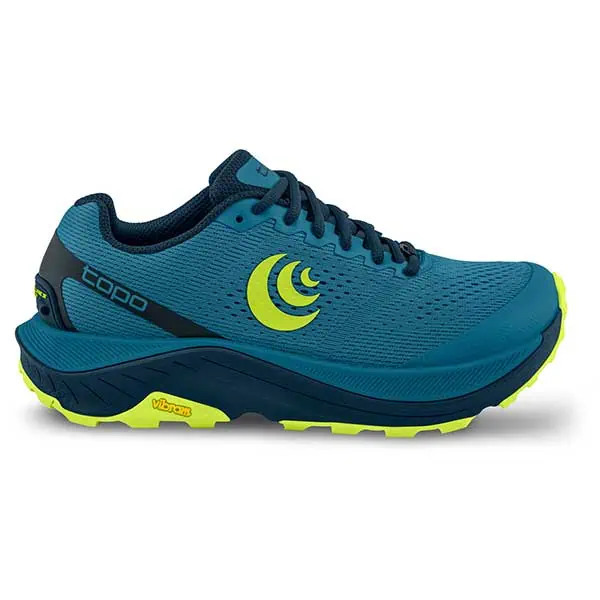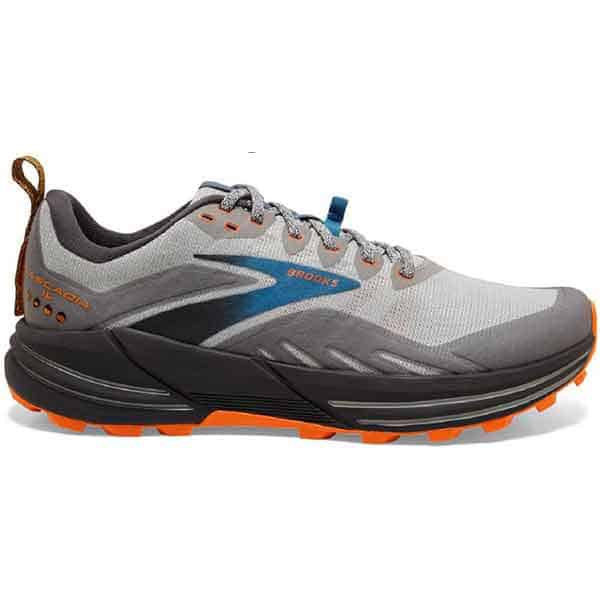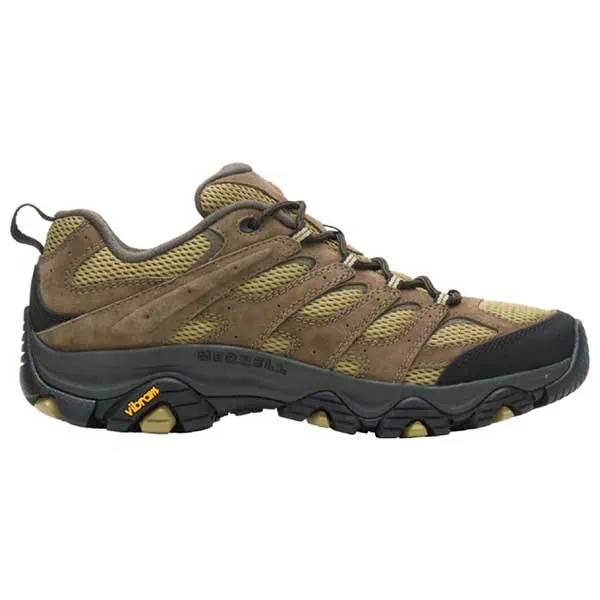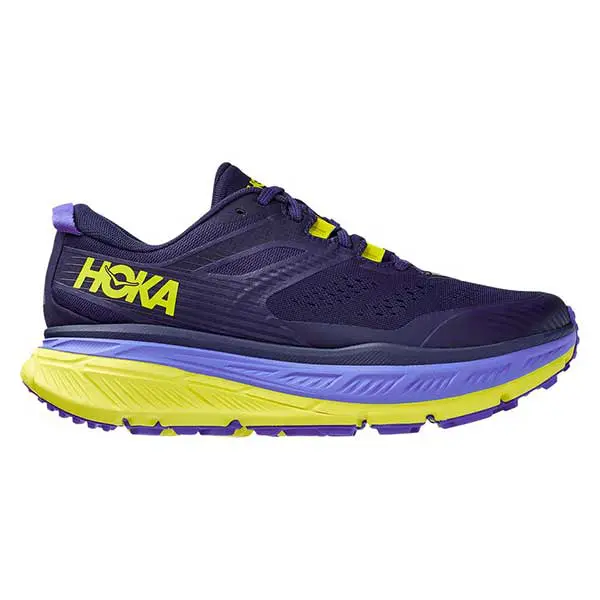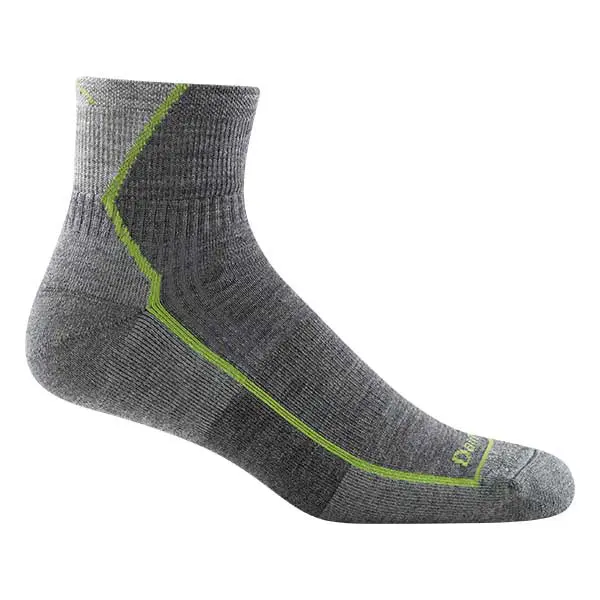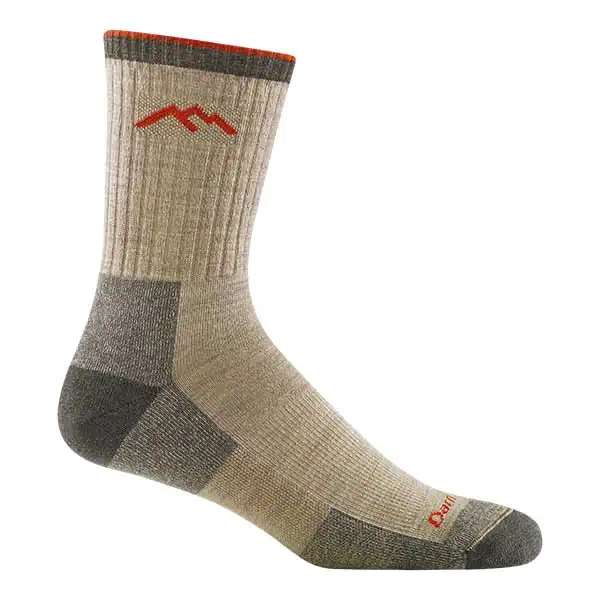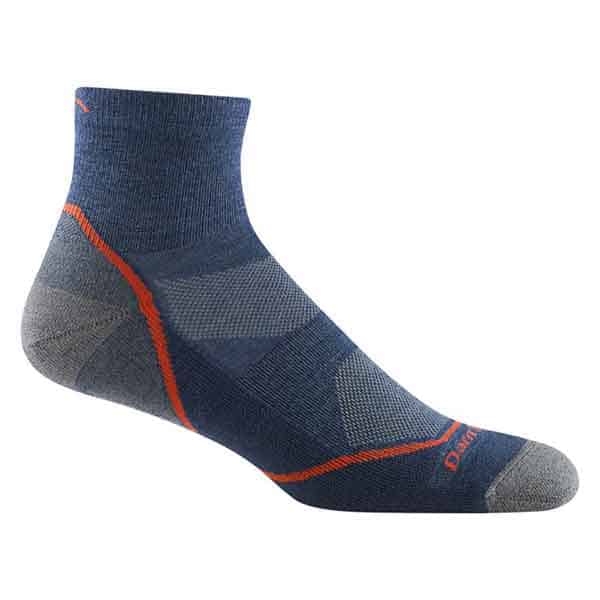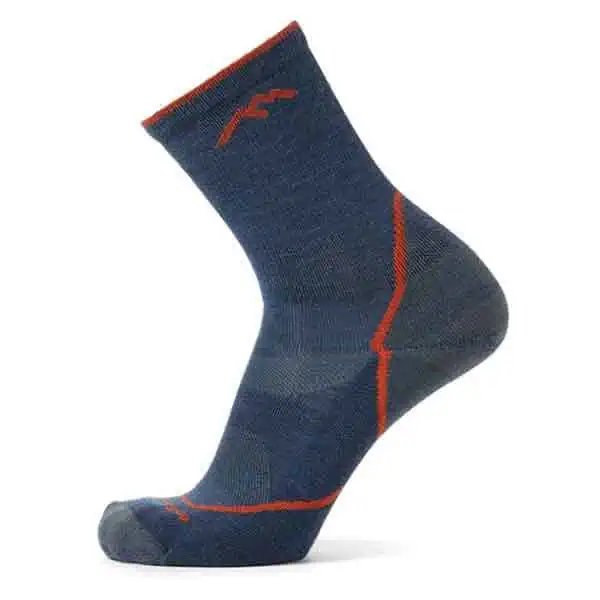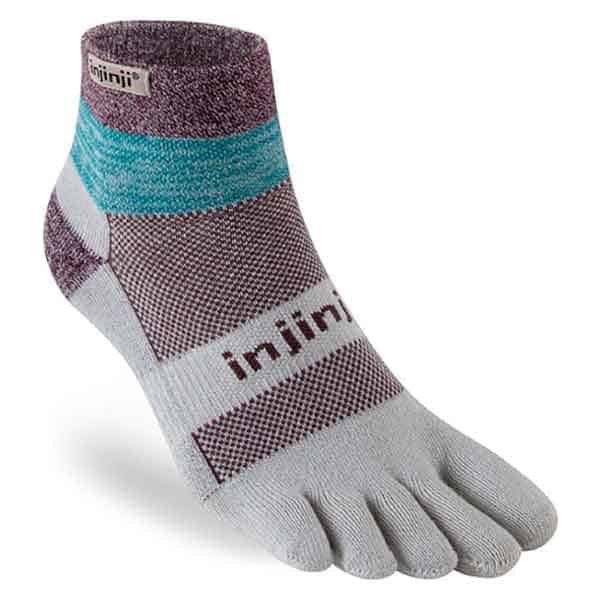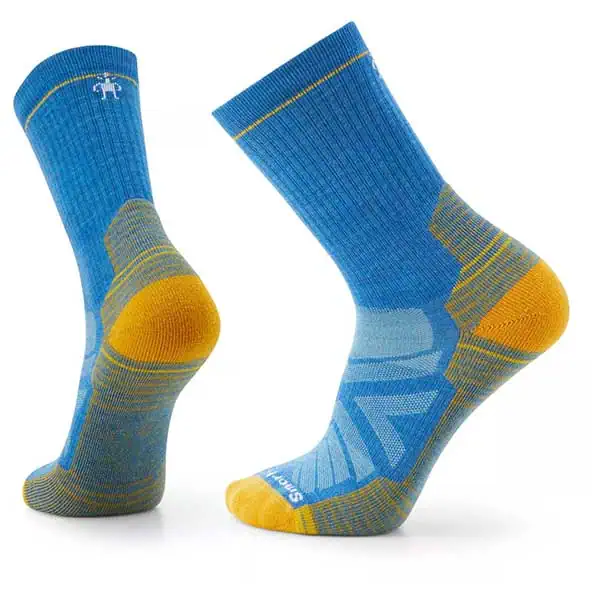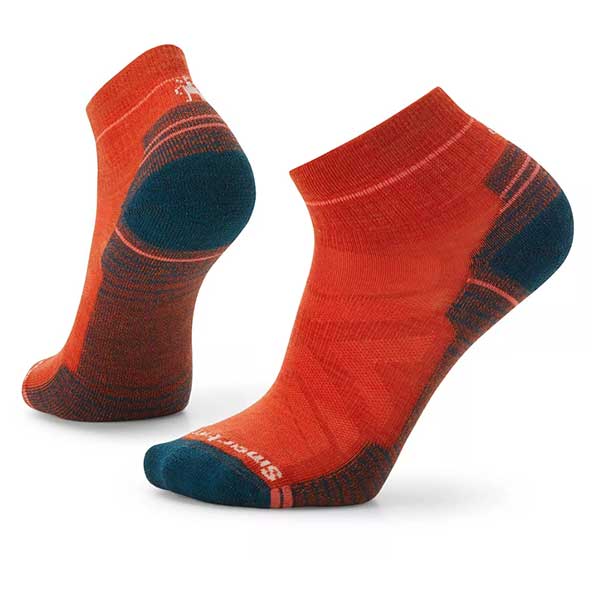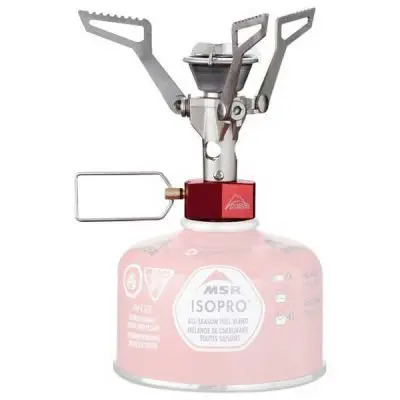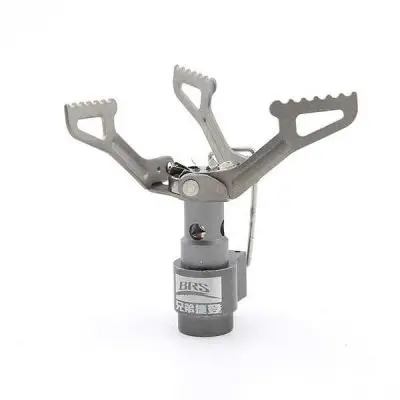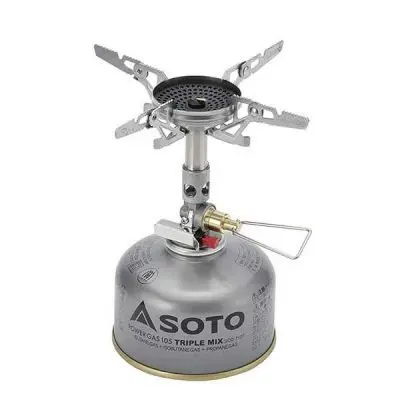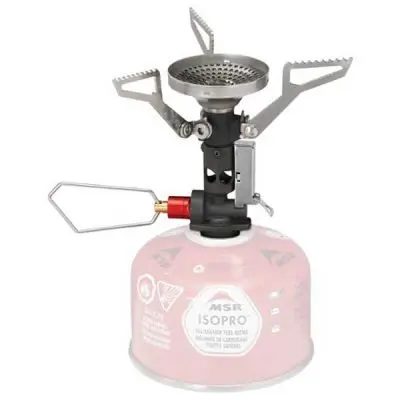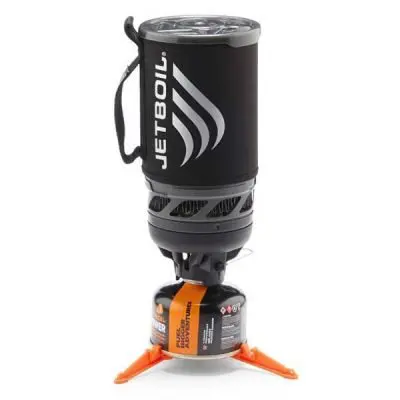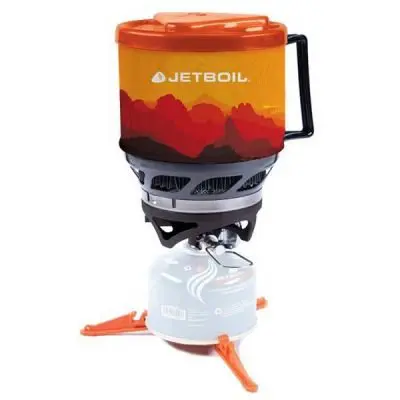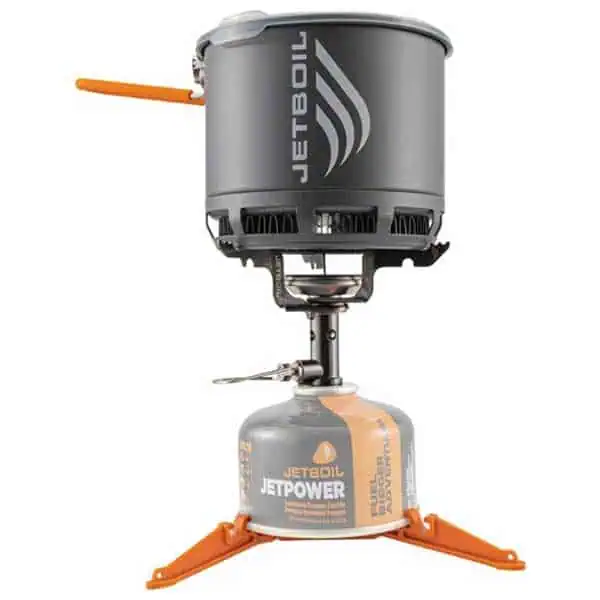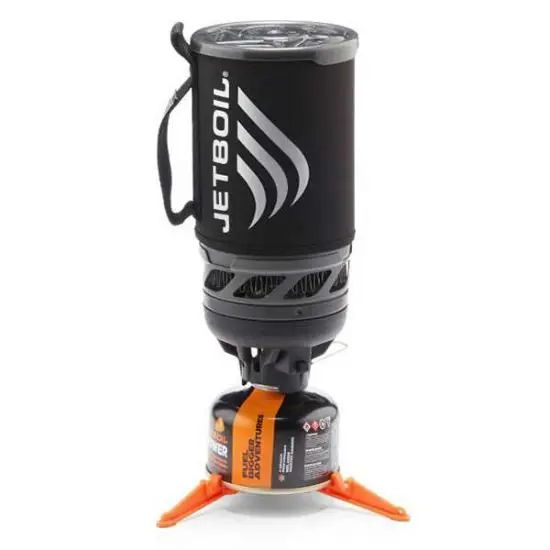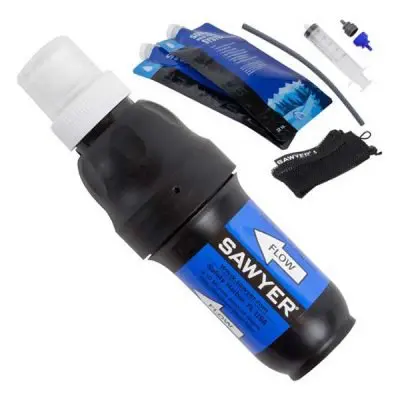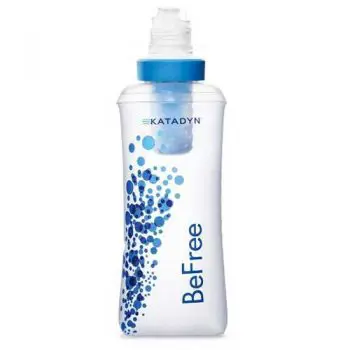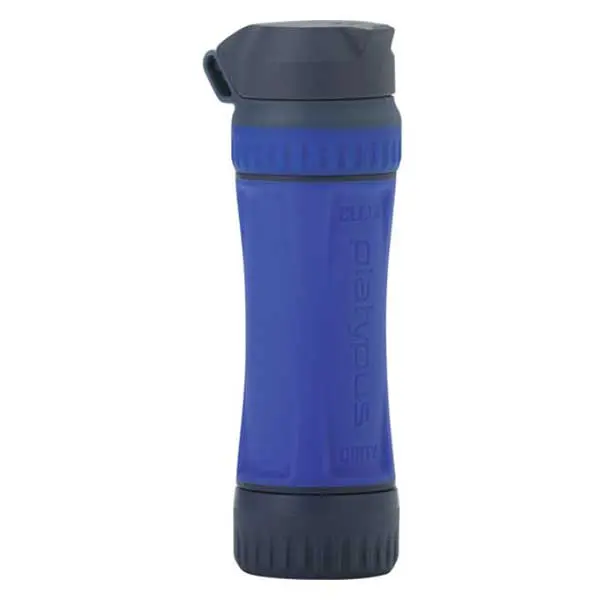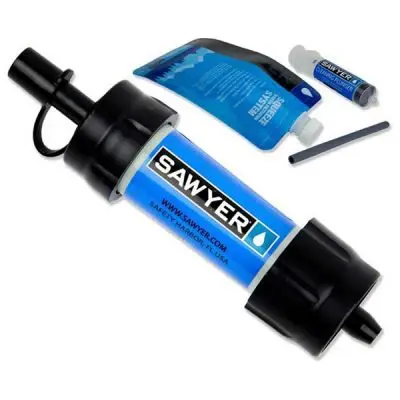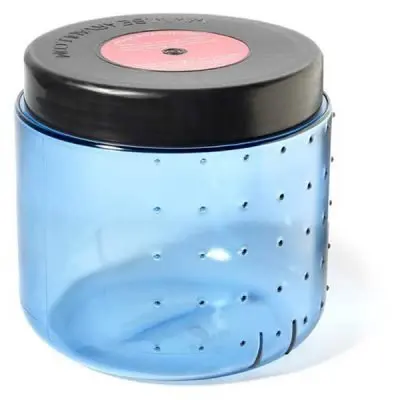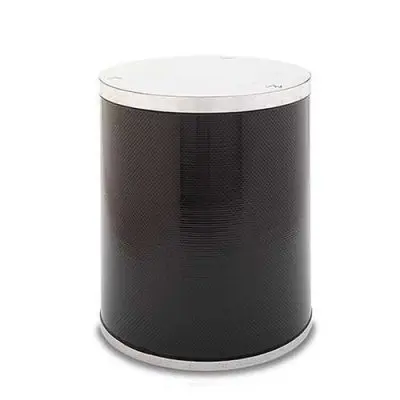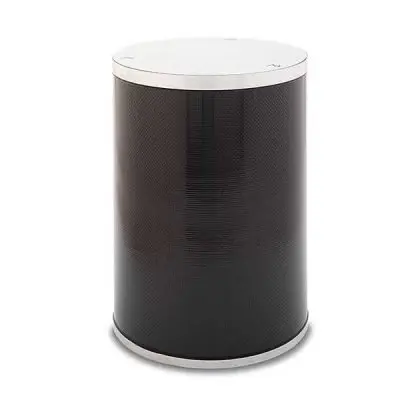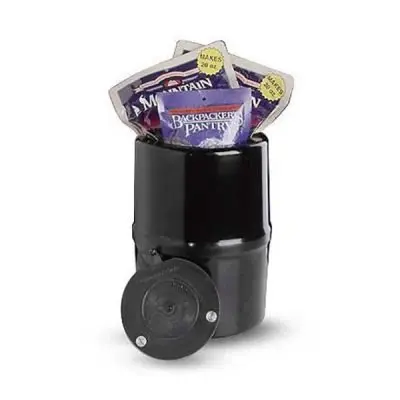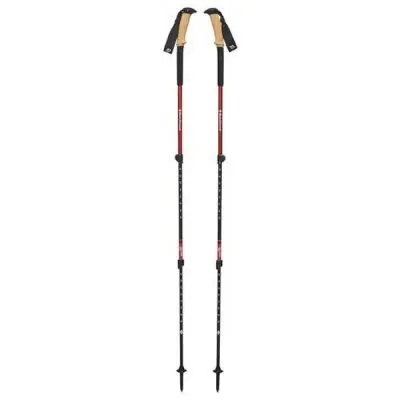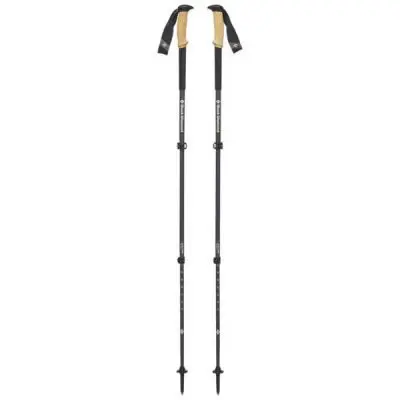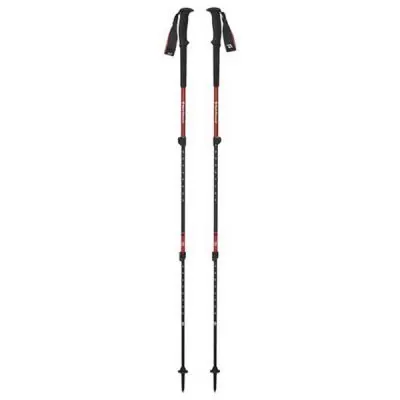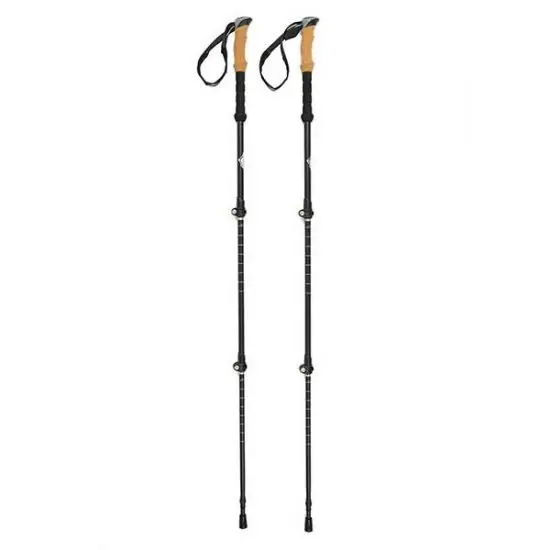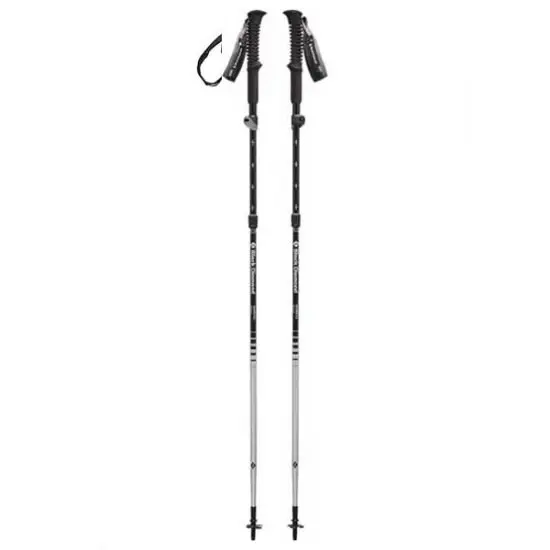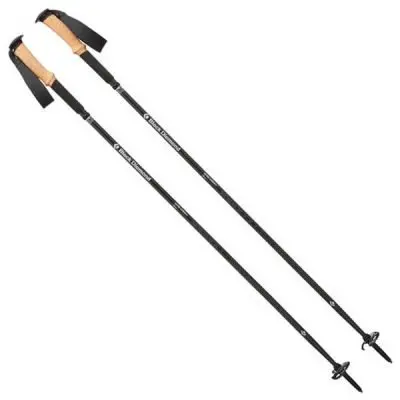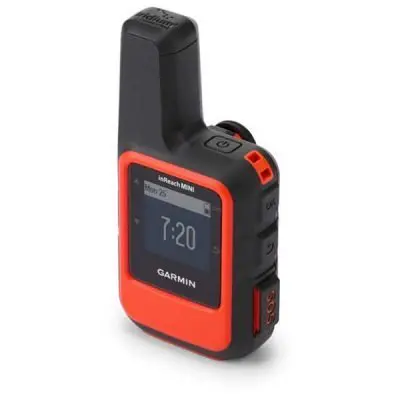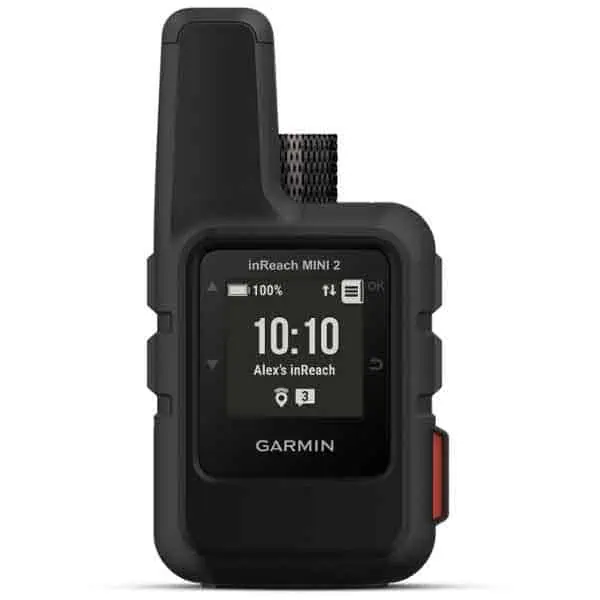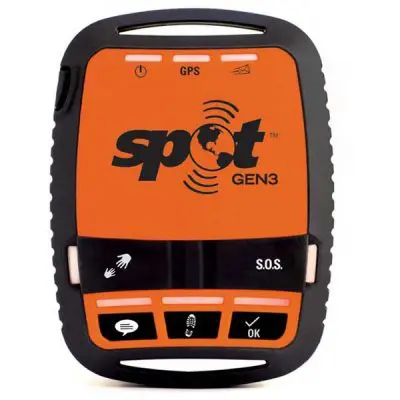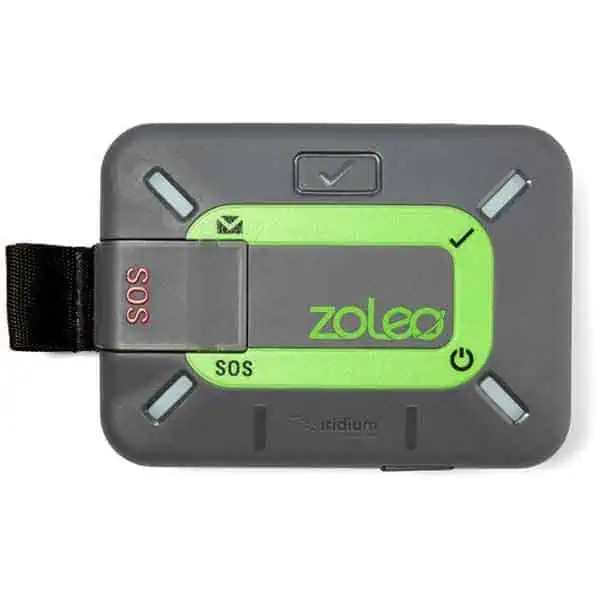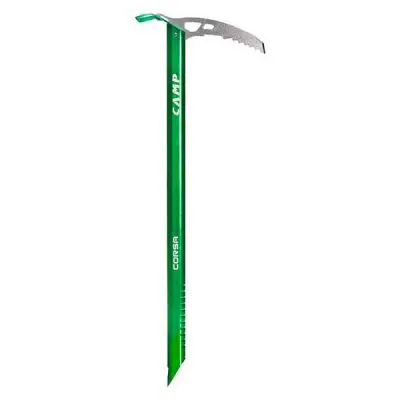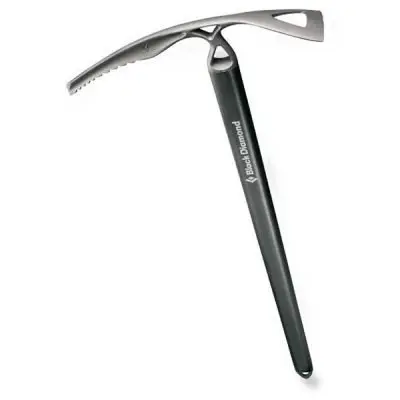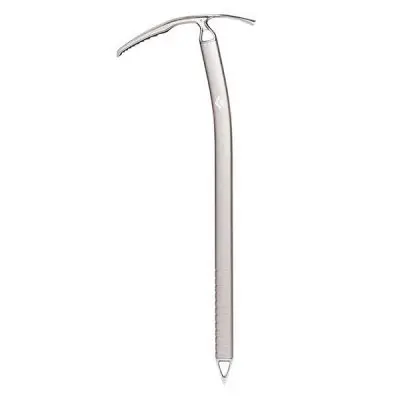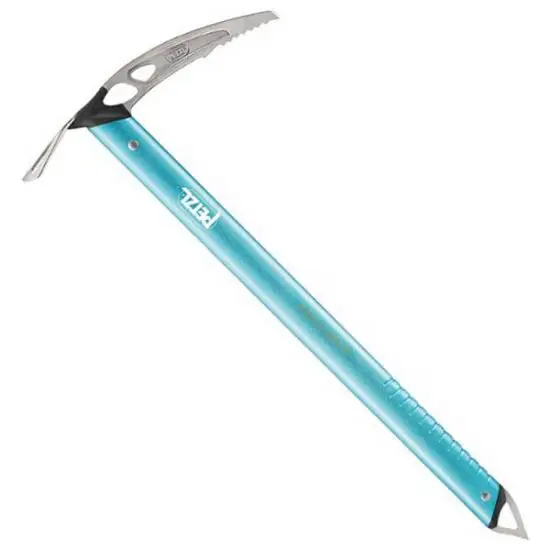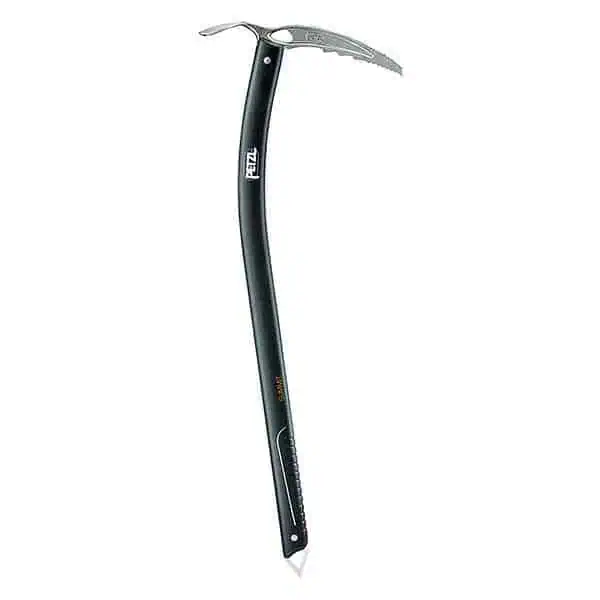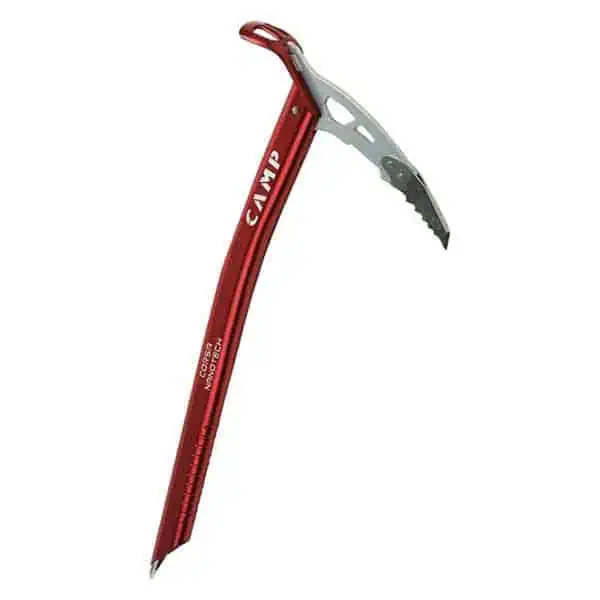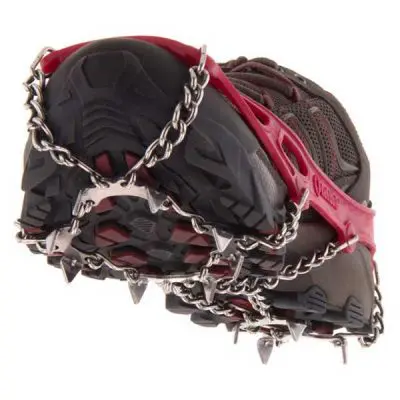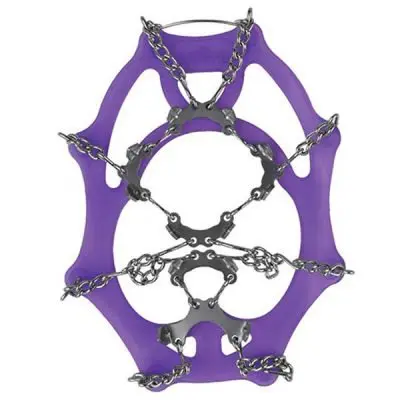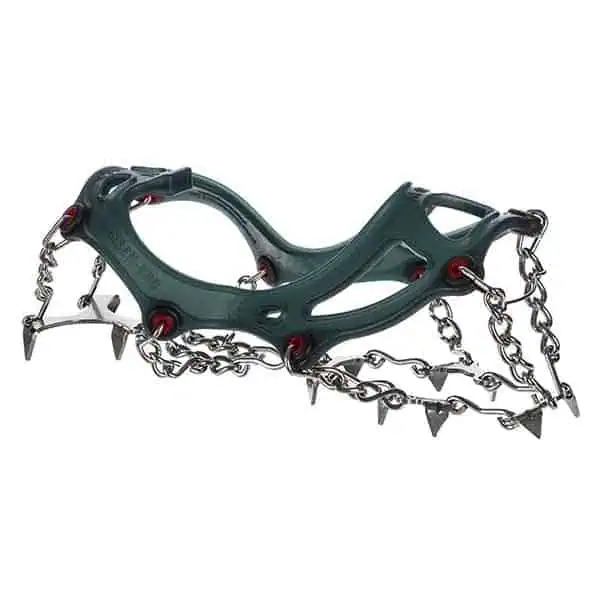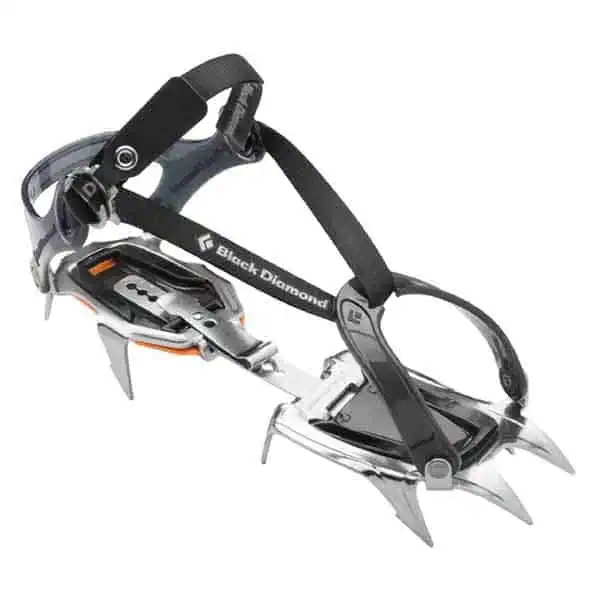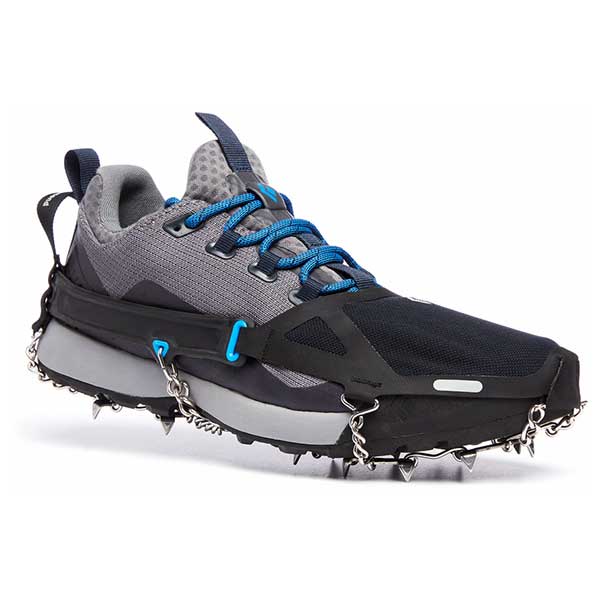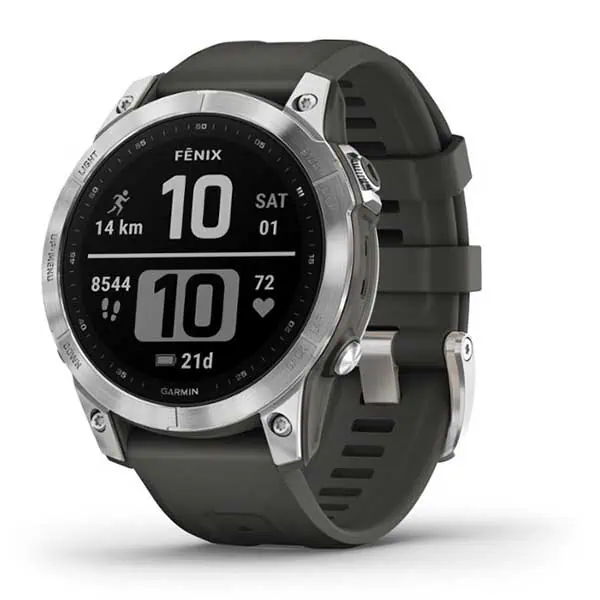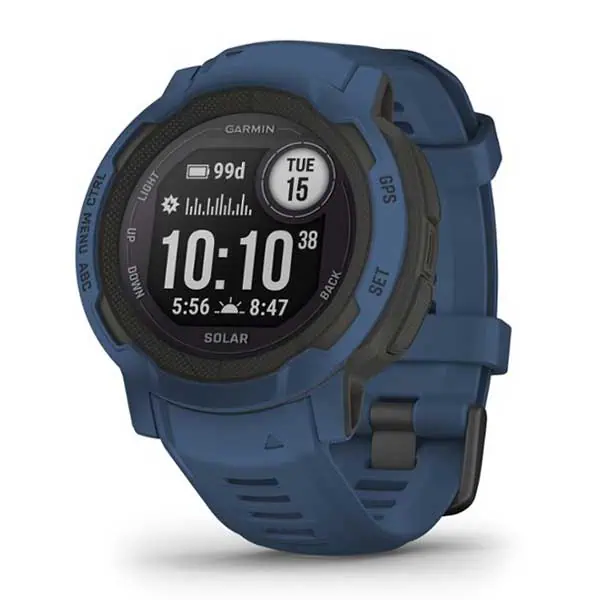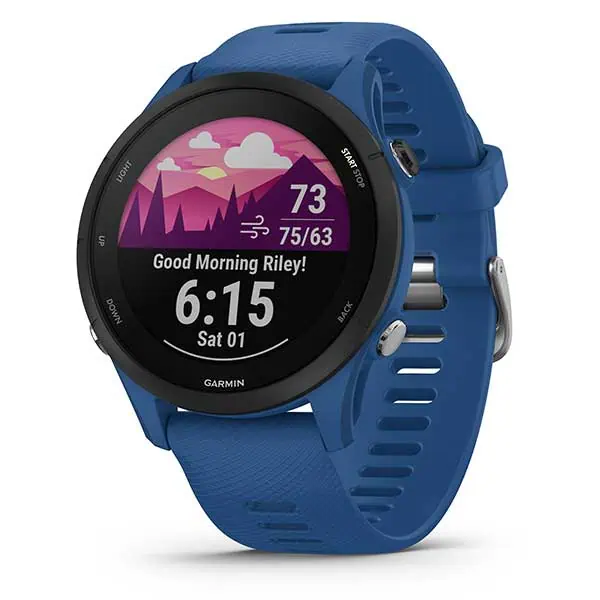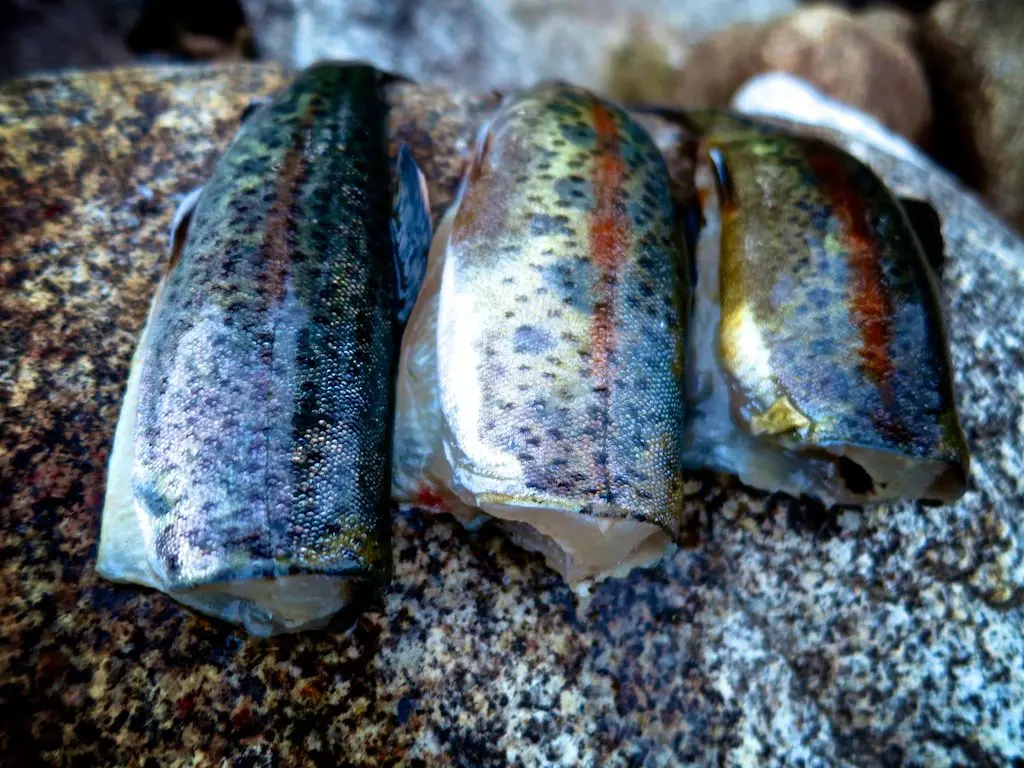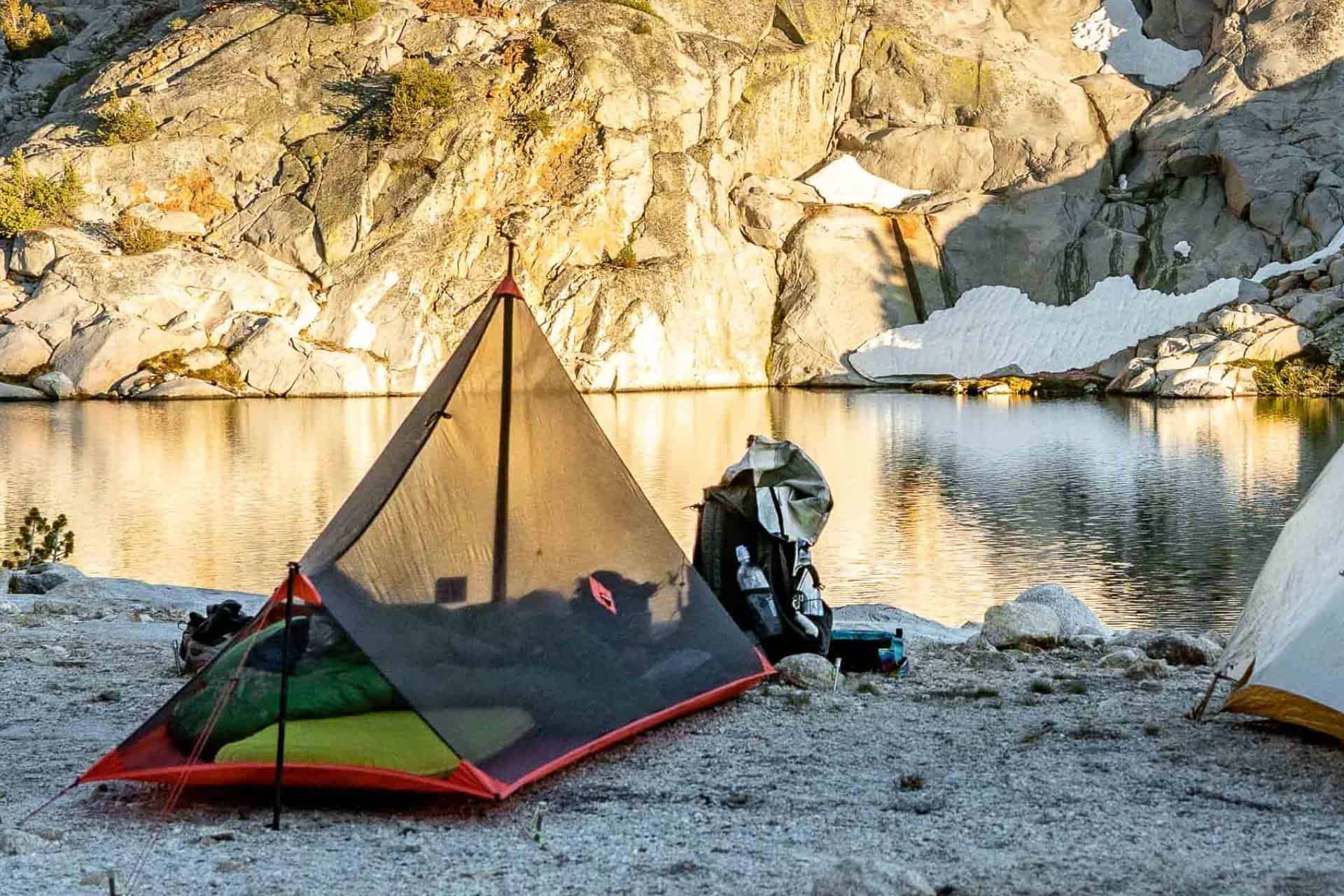The Pacific Crest Trail Gear Guide: Class of 2022 Survey
Check out the most recent PCT Gear Guide here.
In the second installment of this year’s Pacific Crest Trail Thru-Hiker Survey, we dive into gear for hiking the PCT. Pacific Crest Trail gear lists vary wildly between hikers, and (spoiler alert) it’s impossible to find a perfect PCT gear list. That said, we can try.
I’ve organized this in a way that I hope will give a comprehensive picture of what gear PCT thru-hikers are using. This post covers the highest-rated gear, the most common gear, base weights, gear advice, and more.
The gear covered here includes backpacks, shelters, sleeping bags, sleeping pads, insulated jackets, rain jackets, fleeces, shoes, socks, stoves, water treatment, trekking poles, ice axes, traction systems, bear canisters, satellite messengers/PLBs, fitness trackers, luxury items, and more.
I will be publishing additional articles breaking down the women-specific gear and the gear used by couples hiking the PCT. I am sure that some of you will come up with comparisons you would like to see that I have overlooked.
This year, I’ve changed up the layout a bit and I think I’m happy with the results. Hopefully, the article flows a bit more smoothly and the data is a bit more accessible. The goal is for this to be a useful resource for PCT hikers, so if there’s anything that you think is missing, please leave a comment below.
I hope you enjoy this year’s Pacific Crest Trail Gear Guide brought to you by the PCT Class of 2022.
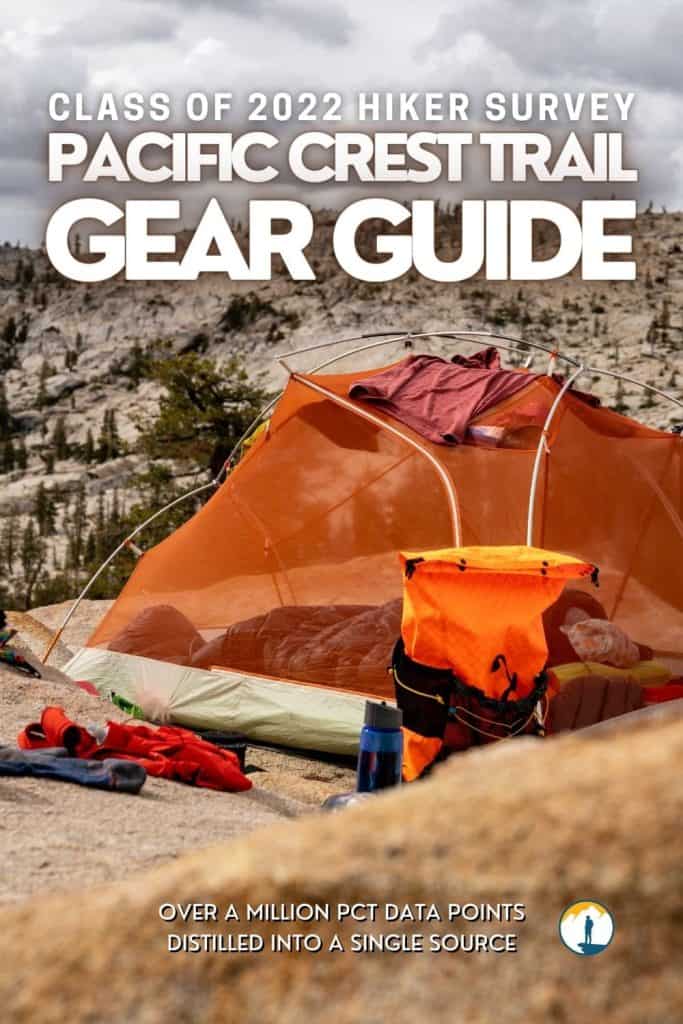
Notes on the Data
- This year has 953 completed surveys – a 38% increase versus last year and the most ever completed in a single season
- Some responses are sorted and colored to make the data friendlier – e.g. northbound or southbound. More on this below.
- The Pacific Crest Trail and thru-hiking in general come with a lot of acronyms and jargon you’re likely unfamiliar with if you’re new to the world of border-to-border foot travel. If you find anything unclear, the thru-hiker glossary may be of use. If you still can’t find what you’re looking for, feel free to drop a comment and let me know.
- I refer to survey respondents collectively as this year’s “class“. Remember, this is a sample (albeit a large one) and not a comprehensive survey of every person on the PCT this year.
- This survey invokes some math. I suggest you familiarize yourself with the words average, median (M), and standard deviation (σ) if you’re looking to get the most out of your time here.
- All weights for products below are for products in a size medium and/or regular unless otherwise noted.
- Backpacks use capacities closest to 55 liters (if multiple options are available) based on this year’s average of 54 liters.
- Sleeping bags and quilts use the highest fill power available and the temperature rating closest to 20°F/-6°C (if multiple options are available) based on this year’s average of 18°F/-8°C
- Ice axes use the length closest to 60 cm (if multiple options are available).
- For the highest-rated gear, I only considered gear used and rated by at least ten hikers.
- All ratings listed are the average (on a scale of 1 to 10) from each hiker who rated the piece of gear.
- More detailed posts focused on breakdowns of women-specific gear and couples’ gear, PCT Resupply, PCT Demographics, PCT Horror Stories, and PCT Advice are in the works. If you would like to be notified of new surveys, click here.
Data Labels
- THRU: Thru-hikers (all)
- THRU-0: Thru-hikers who did NOT complete the PCT
- THRU-1: Thru-hikers who completed the entire PCT
Most Common PCT Gear
I ask each survey respondent about the gear they used during their Pacific Crest Trail hike. With this information, we can easily see what the most popular pieces of gear were on the trail. Here’s what this year’s “Most Common PCT Gear List” backpack had in it – and what that theoretical backpack was.
- Backpack: ULA Circuit (2.29 lbs | 1.038 kg | $280)
- Shelter: Zpacks Duplex (1.19 lbs | 539 g | $699)
- Sleeping bag: Enlightened Equipment Enigma (21.2 oz / 601 g | $345)
- Sleeping pad: Therm-a-Rest NeoAir XLite (12.5 oz / 354 g | $200)
- Insulated jacket: Enlightened Equipment Torrid – Men’s/Women’s (8.4 oz / 238 g | $185)
- Shell: Frogg Toggs Ultra-Lite 2 (8.8 oz / 250 g | $25)
- Fleece: Melanzana Microgrid Hoodie (12.2 oz / 346 g | $78)
- Shoes: Altra Lone Peak – Men’s/Women’s (22 oz / 624 g | $150)
- Socks: Darn Tough Hiker Quarter Midweight – Men’s/Women’s (2 oz / 57 g | $20)
- Stove: MSR PocketRocket 2 (2.4 oz / 68 g | $50)
- Water treatment: Sawyer Squeeze (3 oz / 85 g / $39)
- Bear canister: BearVault BV500 (41 oz / 1.162 kg | $93)
- Trekking poles: Black Diamond Alpine Carbon Cork (17.1 oz / 485 g / $200)
- PLB: Garmin inReach Mini (3.5 oz / 100 g | $350)
- Ice axe: C.A.M.P. USA Corsa (8.2 oz / 232 g | $120)
- Traction device: Kahtoola MICROspikes (11 oz / 312 g | $75)
- Fitness tracker: Garmin Fenix (2.79 oz / 79 g | $700)
Total weight – Big 3 (pack, shelter, sleeping bag): 4.8 lbs / 2.164 kg
Total weight – Big 4 (Big 3 + sleeping pad): 5.55 lbs / 2.504 kg
All gear (outside Sierra): 7.95 lbs / 3.591 kg (this does not include ice axe, traction, bear canister, trekking poles, shoes, socks, or fitness tracker)
All gear: 11.71 lbs / 5.297 kg (this does not include trekking poles, shoes, socks, or fitness tracker)
In addition to the items noted above, these total base weights (a backpack’s weight minus food, water, and consumables – like poop paper) are missing a few pieces of gear (headlamp, extra clothing, electronics, etc.). It brings us over halfway to the year’s average starting base weight of 17.6 lbs / 7.983 kg. Note that the stove included in this list, the MSR PocketRocket 2, does not include the weight of a pot.
The total price of all this gear? $2,909 (with one pair of shoes and one pair of socks); I did not include the $700 price tag of the Garmin Fenix. The average thru-hikers spent on gear prior to beginning their hikes? $1,563 (M = $1,200 | σ = $1,230).
Below, is a detailed look at the most common gear in each of the following categories: backpacks, shelters, sleeping bags, sleeping pads, insulated jackets, shells, fleeces, shoes, socks, stoves, water treatments, bear canisters, trekking poles, PLBs, ice axes, traction systems, and fitness trackers.
Highest-Rated Gear List
In addition to asking each Pacific Crest Trail hiker what gear they used, I ask hikers to rate each piece of gear. No point in doing what everyone else is doing if none of them are happy with their choices, right? I’ve also used the results to construct a top-ten list for each of the categories surveyed.
Here’s what this year’s “Highest-Rated PCT Gear List” backpack had in it – and what that theoretical backpack was.
- Backpack: LiteAF Gear Curve Full Suspension (28.5 oz | 808 g | $345)
- Shelter: Tarptent Double Rainbow (39.7 oz / 1.125 kg | $319)
- Sleeping bag/quilt: Katabatic Gear Alsek (22.2 oz / 630 g | $430)
- Sleeping pad: Therm-a-Rest NeoAir XTherm (17 oz / 482 g | $230)
- Insulated jacket: Feathered Friends Eos – Men’s/Women’s (10.8 oz / 306 g | $409)
- Shell: Zpacks Vertice – Men’s/Women’s (7 oz / 198 g | $299)
- Fleece: Senchi Designs Lark (5 oz / 142 g | $95)
- Shoes: Brooks Cascadia – Men’s/Women’s (19.1 oz / 542 g | $130)
- Socks: Smartwool Hike Light Cushion Crew ($24)
- Stove: MSR WindBurner (15.3 oz / 434 g | $170)
- Water treatment: Aquamira (3 oz / 85 g | $15)
- Bear canister: Bearikade Expedition (36 oz / 1.201 kg | $424)
- Trekking poles: Black Diamond Trail Pro Shock (20.81 oz / 590 g / $160)
- PLB: Garmin inReach Mini 2 (3.5 oz / 100 g | $400)
- Ice axe: C.A.M.P. USA Corsa Nanotech (8.9 oz / 252 g | $160)
- Traction: Hillsound Trail Crampons (15.7 oz / 445 g | $75)
- Fitness tracker: Garmin Fenix (2.79 oz / 79 g | $700)
Total weight – Big 3 (pack, shelter, sleeping bag): 5.65 lbs / 2.561 kg
Total weight – Big 4 (Big 3 + sleeping pad): 6.71 lbs / 3.043 kg
All gear (outside Sierra): 9.5 lbs / 4.308 kg (this does not include ice axe, traction, bear canister, trekking poles, shoes, socks, or fitness tracker)
All gear: 13.68 lbs / 6.206 kg (this does not include trekking poles, shoes, socks, or fitness tracker)
In addition to the items noted above, these total base weights (a backpack’s weight minus food, water, and consumables – like poop paper) are missing a few pieces of gear (headlamp, extra clothing, electronics, etc.). It brings us over halfway to the year’s average starting base weight of 17.6 lbs / 7.983 kg. Note that the stove included in this list, the MSR WindBurner, includes the weight of a pot.
The total price of all this gear? $3,682 (with one pair of shoes and one pair of socks); I did not include the $700 price tag of the Garmin Fenix. The average thru-hikers spent on gear prior to beginning their hikes? $1,563 (M = $1,200 | σ = $1,230).
Below, is a detailed look at the highest-rated gear in each of the following categories: backpacks, shelters, sleeping bags, sleeping pads, insulated jackets, shells, fleeces, shoes, socks, stoves, water treatments, bear canisters, trekking poles, PLBs, ice axes, traction systems, and fitness trackers.
Backpacks
One thing everyone definitely (probably?) needs if they’re going on an extended backpacking trip? A backpack.
A backpack can do a lot to define a hiker and you can usually tell a lot (or at least you can sometimes think you can tell a lot) about a hiker by simply taking a look at their pack. In this first section, we’ll look at some backpack stats as well as the most common and highest-rated backpacks among Pacific Crest Trail hikers this year.
Here is the average backpack size used by thru-hikers.
THRU
54.2
(M = 55 | σ = 10.6)
THRU-1
54.2
(M = 55 | σ = 9.8)
THRU-0
54
(M = 55 | σ = 11.9)
Hikers’ most common complaints when it came to backpacks this year? Packs were uncomfortable with heavy loads, packs were too heavy (as in the packs themselves), and complaints about the durability of packs.
Most Common PCT Backpacks
The ULA Circuit was the most common backpack on the Pacific Crest Trail this year – for the third year in a row. It is a 2.29 lb / 1.038 kg pack capable of carrying up to 68 L and 35 lbs / 16 kg of gear. The Circuit was the third-highest-rated pack by PCT hikers this year (for the second consecutive year).
| # | BACKPACK | RATING | PRICE | WEIGHT | LITERS | MAX LOAD |
|---|---|---|---|---|---|---|
| 1 | ULA Circuit | 8.63 | $280 | 2.29 lb | 1.038 kg | 68 | 35 lb | 16 kg |
| 2 | Gossamer Gear Mariposa | 7.95 | $285 | 1.79 lb | 814 g | 60 | 35 lb | 16 kg |
| 3 | Hyperlite Mountain Gear Southwest | 8.68 | $379 | 2.00 lb | 896 g | 55 | 40 lb | 18 kg |
| 4 | Osprey Exos | 8.22 | $260 | 2.84 lb | 1.288 kg | 58 | 35 lb | 16 kg |
| 5 | Zpacks Arc Haul | 7.70 | $399 | 1.30 lb | 590 g | 50 | 40 lb | 18 kg |
| 6 | Osprey Eja | 8.06 | $260 | 2.82 lb | 1.280 kg | 58 | 35 lb | 16 kg |
| 7 | Hyperlite Mountain Gear Junction | 8.35 | $379 | 2.00 lb | 896 g | 55 | 40 lb | 18 kg |
| 8 | REI Co-op Flash | 8.77 | N/A | 2.64 lb | 1.191 kg | 55 | 30 lb | 14 kg |
| 9 | Atom Packs Pulse | 9.14 | $256 | 1.49 lb | 675 g | 50 | 30 lb | 14 kg |
| 10 | ULA Catalyst | 8.43 | $300 | 2.92 lb | 1.324 kg | 75 | 40 lb | 18 kg |
Highest-Rated PCT Backpacks
The LiteAF Gear Curve Full Suspension was the highest-rated pack on the PCT this year. This is the pack’s first appearance on the top PCT packs. It’s a highly customizable pack that weighs 28.5 oz / 808 g (although this varies based on configuration) and costs $345. The maximum recommended load for this pack is 35 lbs / 16 kg.
| # | BACKPACK | RATING | PRICE | WEIGHT | LITERS | MAX LOAD |
|---|---|---|---|---|---|---|
| 1 | LiteAF Gear Curve Full Suspension | 9.29 | $345 | 1.78 lb | 808 g | 40 | 35 lb | 16 kg |
| 2 | Atom Packs Pulse | 9.14 | $256 | 1.49 lb | 675 g | 50 | 30 lb | 14 kg |
| 3 | SWD Rugged Long Haul | 8.80 | $345 | 2.02 lb | 913 g | 50 | 50 lb | 23 kg |
| 4 | Hyperlite Mountain Gear Windrider | 8.78 | $379 | 1.98 lb | 1.191 kg | 55 | 40 lb | 18 kg |
| 5 | REI Co-op Flash | 8.77 | N/A | 1.98 lb | 1.191 kg | 55 | 30 lb | 14 kg |
| 6 | Hyperlite Mountain Gear Southwest | 8.68 | $379 | 2 lb | 896 g | 55 | 40 lb | 18 kg |
| 7 | ULA Circuit | 8.64 | $280 | 2.29 lb | 1.038 kg | 68 | 35 lb | 16 kg |
| 8 | Atom Packs Prospector | 8.58 | $272 | 2.01 lb | 910 g | 50 | 42 lb | 19 kg |
| 9 | SWD Ultralight Long Haul | 8.57 | $355 | 1.89 lb | 856 g | 50 | 50 lb | 23 kg |
| 10 | ULA Ohm | 8.55 | $260 | 2.11 lb | 958 g | 63 | 30 lb | 13.6 kg |
Shelters
Shelters – basically the umbrella term for tents since there are also options such as bivy sacks, tarps, pyramids, and lean-tos – are another essential piece of equipment on the Pacific Crest Trail.
A consideration for hikers when choosing their shelter is whether they would like said shelter to be freestanding. What is a freestanding shelter? It’s a shelter that needs only the tent body and its poles to be set up – no stakes or superfluous tie-outs required. An example of this kind of shelter is the year’s third-highest-rated shelter, the Big Agnes Copper Spur HV UL2.
Shelters that are not freestanding require that they be staked or tied out to be set up. These types of shelters typically (but not always) use trekking poles instead of the more traditional tent poles to be set up – something to be considered when looking at shelter weights and prices. An example of this kind of shelter is the year’s most common shelter, the Zpacks Duplex.
Lastly, a semi-freestanding shelter is one that (typically) uses tent poles and can stand on its own, but that requires stakes or tie-outs to be completely set up. An example of this kind of shelter is the year’s third-most-common shelter, the NEMO Hornet 2P.
The following is a breakdown of how many hikers were using a freestanding shelter (I counted semi-freestanding shelters as 0.5 in the calculation).
The percentage of hikers using each type of shelter on the Pacific Crest Trail this year.
- 54.0% – Not freestanding
- 24.5% – Freestanding
- 21.5% – Semi-freestanding
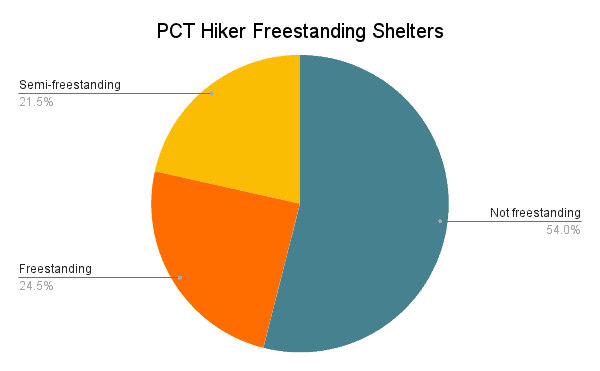
Of the top ten most common shelters, just two (the Big Agnes Copper Spur HV UL2 and Big Agnes Copper Spur HV UL3) are freestanding. Three others (the NEMO Hornet 2P, Big Agnes Tiger Wall UL2, and Big Agnes Fly Creek HV UL2) are semi-freestanding. This means they can stand on their own without stakes, but they require stakes to be set up fully/properly. The other five are not freestanding.
Most Common PCT Shelters
The Zpacks Duplex was the most common shelter on the PCT this year (for the third year in a row). It’s a $700, two-person, side-entry, 19 oz / 539 g shelter that requires two trekking poles to set up. It’s made from .51 oz/yd² Dyneema Composite Fabric and required eight stakes to be set up (not included in the $700 price tag).
| # | SHELTER | RATING | PRICE | WEIGHT | FLOOR | FREESTANDING | CAPACITY |
|---|---|---|---|---|---|---|---|
| 1 | Zpacks Duplex | 8.56 | $699 | 1.19 lb | 539 g | 28 ft² / 2.6 m² | No | 2 |
| 2 | Gossamer Gear The One | 8.10 | $300 | 1.11 lb | 503 g | 15.8 ft² / 1.5 m² | No | 1 |
| 3 | NEMO Hornet 2P | 8.77 | $400 | 2.38 lb | 1.08 kg | 27.5 ft² / 2.6 m² | Semi | 2 |
| 4 | Big Agnes Tiger Wall UL2 | 8.33 | $450 | 1.88 lb | 853 g | 28 ft² / 2.6 m² | Semi | 2 |
| 5 | Zpacks Triplex | 8.39 | $799 | 1.37 lb | 622 g | 37.5 ft² / 3.5 m² | No | 3 |
| 6 | Big Agnes Copper Spur HV UL2 | 9.06 | $550 | 2.69 lb | 1.22 kg | 29 ft² / 2.7 m² | Yes | 2 |
| 7 | Big Agnes Fly Creek HV UL2 | 7.75 | $400 | 1.94 lb | 879 g | 28 ft² / 2.6 m² | Semi | 2 |
| 8 | Durston X-Mid 1P | 9.25 | $240 | 1.92 lb | 875 g | 20 ft² / 1.85 m² | No | 1 |
| 9 | Six Moon Designs Lunar Solo | 8.65 | $250 | 1.63 lb | 740 g | 26 ft² / 2.4 m² | No | 1 |
| 10 | Big Agnes Copper Spur HV UL3 | 9.00 | $600 | 3.5 lb | 1.58 kg | 41 ft² / 3.81 m² | Yes | 3 |
Highest-Rated PCT Shelters
The Tarptent Double Rainbow was the highest-rated shelter on the PCT this year. It’s a two-person, side-entry, shelter that weighs 36.4 oz / 1.032 kg and needs to be staked out to properly set up. Despite being a two-person shelter, it was used frequently by solo hikers. There is also a one-person version, the Tarptent Rainbow, available.
| # | SHELTER | RATING | PRICE | WEIGHT | FLOOR | FREESTANDING | CAPACITY |
|---|---|---|---|---|---|---|---|
| 1 | Tarptent Double Rainbow | 9.30 | $319 | 2.48 lb | 1.125 kg | 30.5 ft² / 2.83 m² | Optional | 2 |
| 2 | Durston X-Mid 1P | 9.25 | $240 | 1.92 lb | 875 g | 20 ft² / 1.85 m² | No | 1 |
| 3 | Big Agnes Copper Spur HV UL2 | 9.06 | $550 | 2.69 lb | 1.22 kg | 29 ft² / 2.7 m² | Yes | 2 |
| 4 | Big Agnes Copper Spur HV UL3 | 9.00 | $600 | 3.5 lb | 1.58 kg | 41 ft² / 3.81 m² | Yes | 3 |
| 5 | Tarptent Notch Li | 9.00 | $629 | 1.26 lb | 570 g | 15.7 ft² / 1.46 m² | No | 1 |
| 6 | Durston X-Mid 2P | 8.90 | $300 | 2.21 lb | 1.01 kg | 33.2 ft² / 3.1 m² | No | 2 |
| 7 | NEMO Hornet 2P | 8.77 | $400 | 2.38 lb | 1.08 kg | 27.5 ft² / 2.6 m² | Semi | 2 |
| 8 | Zpacks Soloplex | 8.76 | $599 | 0.87 lb | 395 g | 20.6 ft² / 1.91 m² | No | 1 |
| 9 | Big Agnes Tiger Wall UL3 | 8.70 | $500 | 2.62 lb | 1.19 kg | 38 ft² / 3.53 m² | Semi | 2 |
| 10 | Six Moon Designs Lunar Solo | 8.65 | $250 | 1.63 lb | 740 g | 26 ft² / 2.4 m² | No | 1 |
Sleeping Bags & Quilts
Is there a generic term for sleeping bags and quilts? Sleeping sacks? Insulation-filled backpacking tortillas? Writing sleeping bags/quilts is a bit excessive/unnecessary feeling (and just annoying). Suggestions welcome.
Quilts have become exceedingly popular in recent years and they have become the unofficial standard in thru-hiker kits; four of the top five most common insulation-filled backpacking tortillas (trying it out) were quilts. That said, many quilts come in a variety of temperature ratings and with a large number of customizable options.
Individual hiker temperature needs can vary greatly. How warm of a sleeper are you? Which sleeping pad do you have? Do you sleep in your clothes? With another person? In a small tent? A big tent? With a dog? Bigfoot?
The typical range for PCT sleeping bags and quilts is between 10°F and 20°F (-12.2°C to -6.7°C). Which bag will be best for you will depend. Here’s what this year’s class had.
THRU
17.5°F
-8.4°C
(M = 20°F/-6.7°C | σ = 7.9)
Average sleeping bag temperature
THRU
60%
Percentage of hikers using a quilt instead of a traditional sleeping bag
THRU
20.7°F
-6.3°C
Average temperature of bag/quilt of hikers who said they were too cold at night
Most Common PCT Sleeping Bags
The Enlightened Equipment Enigma was the most common sleeping bag (quilt) on the PCT this year. The Enigma is highly customizable and comes in a variety of lengths, widths, temperature ratings, fill powers, and colors. What’s the difference between the Enigma and the Revelation? The Enigma has a sewn footbox (i.e. the Revelation can be laid completely flat).
| # | RATING | BAG/QUILT | PRICE | WEIGHT | TEMP | FILL | FILL WEIGHT |
|---|---|---|---|---|---|---|---|
| 1 | 9.72 | Enlightened Equipment Enigma | $410 | 19.3 oz | 547 g | 20°F / -6°C | 950 duck | 13.8 oz / 392 g |
| 2 | 9.62 | Enlightened Equipment Revelation | $410 | 20.9 oz | 593 g | 20°F / -6°C | 950 duck | 14.4 oz / 408 g |
| 3 | 9.89 | Katabatic Flex | $420 | 22.8 oz | 646 g | 22°F / -5.6°C | 900 goose | 14.3 oz / 405g |
| 4 | 9.73 | REI Co-op Magma | $429 | 2.22 lb | 1006 g | 15°F / -9°C | 850 goose | 23.3 oz / 660 g |
| 5 | 9.55 | UGQ Bandit | $345 | 19.2 oz | 544 g | 20°F / -6°C | 950 goose | 13 oz / 369 g |
| 6 | 9.83 | Western Mountaineering Versalite | $670 | 32 oz | 907 g | 10°F / -12°C | 850 goose | 20 oz / 565 g |
| 7 | 9.68 | Western Mountaineering UltraLite | $580 | 30 oz | 850 g | 20°F / -6°C | 850 goose | 16 oz / 454 g |
| 8 | 9.71 | Zpacks Classic Sleeping Bag | $449 | 18.8 oz | 533 g | 20°F / -6°C | 900 goose | 14.5 oz / 411 g |
| 9 | 9.93 | Katabatic Alsek | $430 | 22.2 oz | 629 g | 22°F / -5.6°C | 900 goose | 13.4 oz / 380 g |
| 10 | 9.89 | Zpacks Solo Quilt | $429 | 18.3 oz | 520 g | 20°F / -6°C | 900 goose | 13.7 oz / 388 g |
Highest-Rated PCT Sleeping Bags & Quilts
The Katabatic Alsek Quilt was the highest-rated sleeping bag or quilt on the PCT this year. With 900 fill-power HyperDry goose down, it weighs 22.2 oz / 850 g, uses 14.1 oz / 400 g of fill, is rated down to 22°F / -5.5°C, and retails for $430. It comes in three sizes and two widths.
| # | RATING | BAG/QUILT | PRICE | WEIGHT | TEMP | FILL | FILL WEIGHT |
|---|---|---|---|---|---|---|---|
| 1 | 9.93 | Katabatic Alsek | $430 | 22.2 oz | 629 g | 22°F / -5.6°C | 900 goose | 13.4 oz / 380 g |
| 2 | 9.89 | Zpacks Solo Quilt | $429 | 18.3 oz | 520 g | 20°F / -6°C | 900 goose | 13.7 oz / 388 g |
| 3 | 9.89 | Katabatic Flex | $420 | 22.8 oz | 646 g | 22°F / -5.6°C | 900 goose | 14.3 oz / 405g |
| 4 | 9.83 | Western Mountaineering Versalite | $670 | 32 oz | 907 g | 10°F / -12°C | 850 goose | 20 oz / 565 g |
| 5 | 9.73 | REI Co-op Magma | $429 | 2.22 lb | 1006 g | 15°F / -9°C | 850 goose | 23.3 oz / 660 g |
| 6 | 9.72 | Enlightened Equipment Enigma | $410 | 19.3 oz | 547 g | 20°F / -6°C | 950 duck | 13.8 oz / 392 g |
| 7 | 9.71 | Zpacks Classic Sleeping Bag | $449 | 18.8 oz | 533 g | 20°F / -6°C | 900 goose | 14.5 oz / 411 g |
| 8 | 9.68 | Western Mountaineering UltraLite | $580 | 30 oz | 850 g | 20°F / -6°C | 850 goose | 16 oz / 454 g |
| 9 | 9.62 | Enlightened Equipment Revelation | $410 | 20.9 oz | 593 g | 20°F / -6°C | 950 duck | 14.4 oz / 408 g |
| 10 | 9.58 | Western Mountaineering Alpinlite | $645 | 31 oz | 880 g | 20°F / -6°C | 850 goose | 19 oz / 540 g |
Sleeping Pads
Sleeping pads are another must-have item on the Pacific Crest Trail. Hikers essentially have two options: an inflatable sleeping pad or a foam sleeping pad.
There are pros and cons to both. Foam pads can’t pop, can be easily deployed, aren’t noisy when rolled around on, and make acceptable LARPing weapons; inflatable pads pack down small, have higher R-values (i.e. they’re warmer), can (sometimes) be lighter, and make acceptable rafts.
Which sleeping pad is best for you depends on your personal needs and, in some cases, how much durability you’re willing to sacrifice to save weight. The overwhelming majority of PCT hikers used inflatable sleeping pads with 43% of hikers using some version of the Therm-a-Rest NeoAir XLite (either the regular, small, or women’s version).
The percentage of hikers using each style of sleeping pad on the Pacific Crest Trail this year.
- 86.9% – Inflatable
- 13.1% – Foam
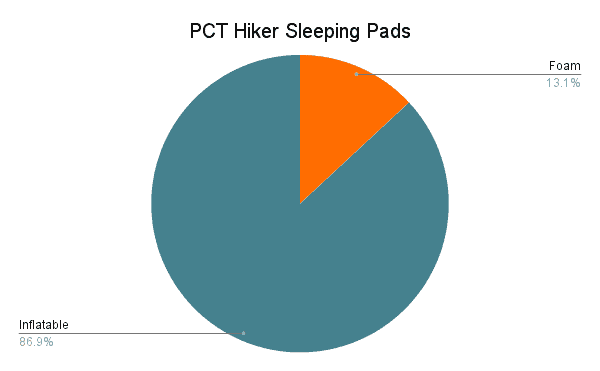
Most Common PCT Sleeping Pads
The Therm-a-Rest NeoAir XLite was the most common sleeping pad among Pacific Crest Trail hikers this year. This air pad has an R-value of 4.2, weighs 12.5 oz / 354 g, packs down to 4.1 x 9 in / 10 x 23 cm, and is 2.5 in / 6.4 cm thick. The women’s version was the fifth-most-common pad on the trail this year and the small version was the fourth most common.
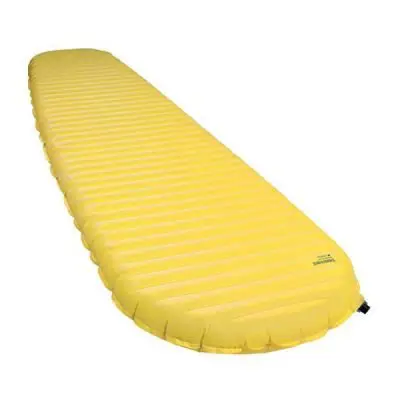
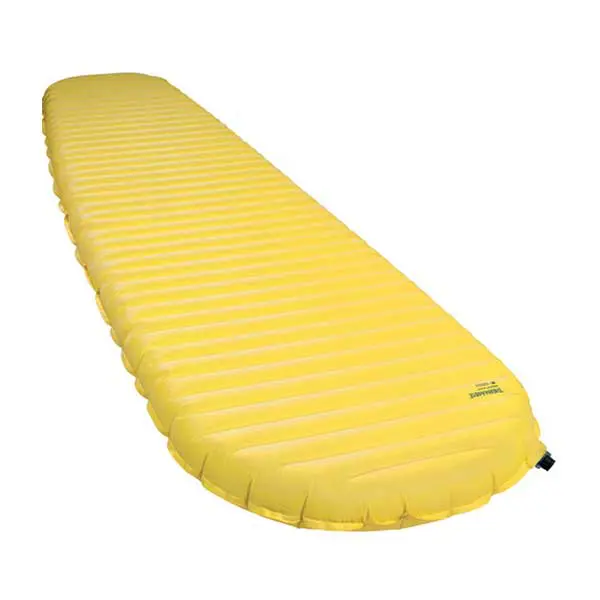
| # | PAD | RATING | PRICE | WEIGHT | R-VALUE | THICKNESS |
|---|---|---|---|---|---|---|
| 1 | Therm-a-Rest NeoAir XLite | 8.11 | $200 | 12.5 oz | 354 g | 4.2 | 2.5 in / 6.4 cm |
| 2 | Therm-a-Rest NeoAir XLite - Women's | 8.40 | $200 | 12.5 oz | 354 g | 5.4 | 2.5 in / 6.4 cm |
| 3 | Therm-a-Rest NeoAir XTherm | 8.93 | $230 | 17 oz | 482 g | 6.9 | 2.5 in / 6.4 cm |
| 4 | NEMO Tensor (Insulated) | 8.17 | $190 | 14.5 oz | 411 g | 4.2 | 3 in / 7.6 cm |
| 5 | NEMO Switchback | 7.85 | $55 | 14.5 oz | 415 g | 2 | 0.9 in / 2.3 cm |
| 6 | Sea to Summit UltraLight Insulated | 7.96 | $150 | 16.9 oz | 480g | 3.1 | 2 in / 5 cm |
| 7 | Therm-a-Rest NeoAir XLite, Small | 8.44 | $180 | 8.3 oz | 235 g | 4.2 | 2.5 in / 6.4 cm |
| 8 | Therm-a-Rest Z Lite Sol | 8.57 | $55 | 14 oz | 397 g | 2 | 0.75 in / 1.9 cm |
| 9 | Therm-a-Rest NeoAir UberLite | 7.63 | $220 | 8.8 oz | 250 g | 2.3 | 2.5 in / 6.4 cm |
| 10 | Exped SynMat HL | 6.94 | $169 | 12.3 oz | 349 g | 3.3 | 2.8 in / 7.1 cm |
Highest-Rated PCT Sleeping Pads
The Therm-a-Rest NeoAir XTherm was the highest-rated sleeping pad from the PCT this year. The 30D-nylon pad has an R-value of 6.9, is 2.5 in / 6.4 cm thick, weighs 17 oz / 482 g, and retails for $230. It comes in regular and long lengths and there is a wide version available of the regular.
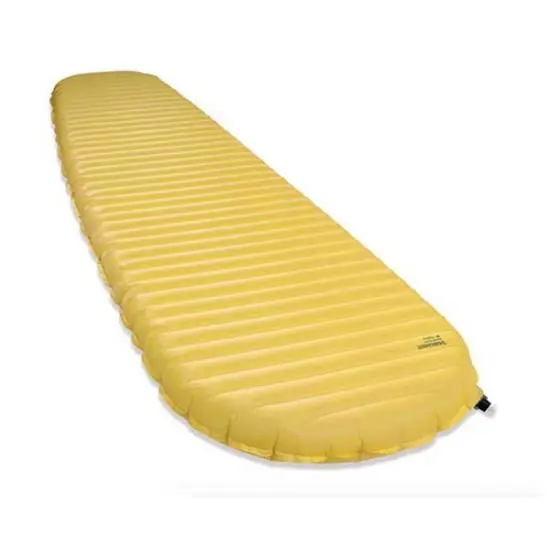

| # | PAD | RATING | PRICE | WEIGHT | R-VALUE | THICKNESS |
|---|---|---|---|---|---|---|
| 1 | Therm-a-Rest NeoAir XTherm | 8.93 | $230 | 17 oz | 482 g | 6.9 | 2.5 in / 6.4 cm |
| 2 | Therm-a-Rest Z Lite Sol | 8.57 | $55 | 14 oz | 397 g | 2 | 0.75 in / 1.9 cm |
| 3 | Sea to Summit Ether Light XT Insulated | 8.53 | $189 | 16.6 oz | 470 g | 3.2 | 4 in / 10 cm |
| 4 | Therm-a-Rest NeoAir XLite, Small | 8.44 | $180 | 8.3 oz | 235 g | 4.2 | 2.5 in / 6.4 cm |
| 5 | Therm-a-Rest NeoAir XLite - Women's | 8.40 | $200 | 12.5 oz | 354 g | 5.4 | 2.5 in / 6.4 cm |
| 6 | Therm-a-Rest NeoAir ProLite | 8.20 | $110 | 18 oz | 510 g | 2.4 | 1 in / 2.5 cm |
| 7 | NEMO Tensor (Insulated) | 8.17 | $190 | 14.5 oz | 411 g | 4.2 | 3 in / 7.6 cm |
| 8 | Therm-a-Rest NeoAir XLite | 8.11 | $200 | 12.5 oz | 354 g | 4.2 | 2.5 in / 6.4 cm |
| 9 | Sea to Summit UltraLight Insulated | 7.96 | $150 | 16.9 oz | 480g | 3.1 | 2 in / 5 cm |
| 10 | Therm-a-Rest NeoAir XTherm MAX | 7.91 | $240 | 19 oz | 539 g | 6.9 | 2.5 in / 6.4 cm |
Insulated Jackets
Something to keep the top half of your body warm – whether this is a base layer, a fleece, or an insulated jacket – is something else every Pacific Crest Trail hiker should have with them. Of this year’s class, 95.5% of hikers had an insulated jacket – meaning 4.5% of hikers said they didn’t bring one.
Besides the question of whether to bring an insulated jacket (insulated jacket because “down jacket” isn’t accurate since not all jackets use down insulation and because the word “puffy” isn’t quite official – also I want to spell the plural “puffys” because “puffies” looks weird and I’m never quite sure which to use), hikers need to decide whether they want their jacket to have a hood.
Many of the most popular insulated jackets have both hooded and non-hooded versions available. Typically the hoodless versions are called “jackets” while the hooded versions are called hoodies (e.g. Patagonia Micro Puff Jacket vs. Patagonia Micro Puff Hoody).
The percentage of hikers using hooded and not hooded (unhooded?) jackets on the Pacific Crest Trail this year.
- 84.3% – Hooded
- 15.7% – Not hooded
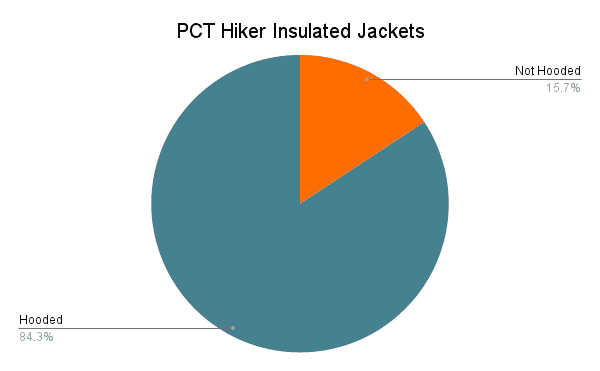
Most Common PCT Insulated Jackets
The Enlightened Equipment Torrid (Men’s/Women’s) was the most common jacket among Pacific Crest Trail hikers this year. The 8.4 oz / 238 g jacket uses 2oz/yd² CLIMASHIELD APEX synthetic insulation and is available with either a 7D or 10D nylon shell. You can get it customized in a variety of colors and there’s a pullover version (Men’s/Women’s) available as well.
| # | JACKET | RATING | PRICE | WEIGHT | HOOD | POCKETS |
|---|---|---|---|---|---|---|
| 1 | Enlightened Equipment Torrid (M/W) | 9.01 | $185 | 8.4 oz | 238 g | Yes | 2 hand |
| 2 | Mountain Hardwear Ghost Whisperer/2 Hoody (M/W) | 9.27 | $325 | 8.8 oz | 249 g | Yes | 2 hand |
| 3 | Patagonia Micro Puff Hoody (M/W) | 8.91 | $299 | 10.7 oz | 303 g | Yes | 2 hand | 2 drop |
| 4 | Decathlon Forclaz Trek 100 (M/W) | 8.82 | $90 | 10 oz | 284 g | Yes | 2 hand |
| 5 | Mountain Hardwear Ghost Whisperer 2 (M/W) | 8.88 | $300 | 8.3 oz | 235 g | No | 2 hand |
| 6 | Arc'teryx Cerium Hoody (M/W) | 9.58 | $400 | 10.2 oz | 290 g | Yes | 2 hand |
| 7 | Patagonia Nano Puff Jacket (M/W) | 8.52 | $229 | 11.9 oz | 337 g | No | 2 hand | 1 internal chest |
| 8 | Patagonia Micro Puff Jacket (M/W) | 8.54 | $279 | 10.5 oz | 298 g | No | 2 hand | 2 drop |
| 9 | Patagonia Nano Puff Hoody (M/W) | 9.36 | $279 | 12.8 oz | 363 g | Yes | 2 hand | 1 internal chest |
| 10 | Mountain Hardwear Ghost Whisperer UL (M/W) | 8.57 | $375 | 6.7 oz | 189 g | Yes | 2 hand |
Highest-Rated PCT Insulated Jackets
The Feathered Friends Eos (Men’s/Women’s) was the highest-rated insulated jacket among PCT hikers this year. The jacket uses 4. oz / 112 g of 900+ fill goose down with an elastic drawcord hem, Pertex Quantum brushed nylon shell with DWR, and two zippered hand pockets. It weighs 10.8 oz / 306 g and retails for $409.
| # | JACKET | RATING | PRICE | WEIGHT | HOOD | POCKETS |
|---|---|---|---|---|---|---|
| 1 | Feathered Friends Eos (M/W) | 9.73 | $409 | 10.8 oz | 306 g | Yes | 2 hand |
| 2 | Arc'teryx Cerium Hoody (M/W) | 9.58 | $400 | 10.2 oz | 290 g | Yes | 2 hand |
| 3 | Arc'teryx Atom LT Hoody (M/W) | 9.57 | $259 | 13.2 oz | 375 g | Yes | 2 hand |
| 4 | Patagonia Down Sweater (M/W) | 9.44 | $279 | 13 oz | 369 g | No | 2 hand | 1 internal chest | 2 drop |
| 5 | Patagonia Nano Puff Hoody (M/W) | 9.36 | $279 | 12.8 oz | 363 g | Yes | 2 hand | 1 internal chest |
| 6 | Montbell Plasma 1000 Jacket (M/W) | 9.36 | $329 | 4.9 oz | 138 g | No | 2 hand |
| 7 | REI Co-op Magma 850 (M/W) | 9.33 | $219 | 13.8 oz | 391 g | Yes | 2 hand | 1 chest |
| 8 | Mountain Hardwear Ghost Whisperer/2 Hoody (M/W) | 9.27 | $325 | 8.8 oz | 249 g | Yes | 2 hand |
| 9 | Montbell Superior Down Jacket (M/W) | 9.23 | $219 | 7.1 oz | 200 g | No | 2 hand | 1 internal chest |
| 10 | Enlightened Equipment Torrid (M/W) | 9.01 | $185 | 8.4 oz | 238 g | Yes | 2 hand |
Shells
Shells, or rain jackets, aren’t something that Pacific Crest Trail hikers will be using every day, but they are also not something that should be completely overlooked. Weather on the PCT can be unpredictable and getting caught out on the trail unprepared in a storm could quickly turn into a life-threatening situation.
Most Common PCT Shells
The Frogg Toggs Ultra-Lite2 was the most common rainwear on the Pacific Crest Trail this year. I hesitate to prescribe it the title or jacket or shell since it’s as much an emergency poncho as it is a rain jacket, but it’s popular nonetheless. That said, it has the lowest rating of any piece of rain gear used by PCT hikers this year. I try to remain objective in these guides, but feel it worth mentioning that if you are looking for something that will actually keep you warm/dry during periods of extended rain, there are far better (albeit more expensive) options available.
| # | SHELL | RATING | PRICE | WEIGHT | FABRIC | PIT ZIPS |
|---|---|---|---|---|---|---|
| 1 | Frogg Toggs Ultra-Lite 2 | 7.09 | $25 | 5.5 oz | 156 g | Three-layer polypropylene | No |
| 2 | Outdoor Research Helium (M/W) | 7.27 | $159 | 6.3 oz | 179 g | 2.5-layer Pertex Shield (Nylon) | No |
| 3 | Montbell Versalite (M/W) | 8.73 | $249 | 6.4 oz | 182 g | 2-layer GORE-TEX Infinium Windstopper | Yes |
| 4 | Patagonia Torrentshell (M/W) | 8.33 | $179 | 14.1 oz | 400 g | 3L 3.5-oz 50D ECONYL Recycled Nylon | Yes |
| 5 | Enlightened Equipment Visp (M/W) | 8.74 | $210 | 5.95 oz | 169 g | 7D nylon + PU membrane + tricot lining | Yes |
| 6 | Marmot PreCip (M/W) | 8.07 | $100 | 10.3 oz | 293 g | NanoPro 100% Nylon | Yes |
| 7 | Arc’teryx Beta (M/W) | 8.56 | $400 | 10.6 oz | 300 g | GORE-TEX w/ GORE C-KNIT backer | Yes |
| 8 | Lightheart Gear Rain Jacket | 7.95 | $125 | 6 oz | 170 g | 20D Ripstop Polyester | Yes |
| 9 | Arc’teryx Norvan LT Hoody (M/W) | 8.87 | $400 | 6.7 oz | 190 g | GORE-TEX + GORE C-KNIT backer | No |
| 10 | Black Diamond StormLine Stretch (M/W) | 8.80 | $170 | 11.29 oz | 320 g | BD.dry2.5L w/ DWR | Yes |
Highest-Rated PCT Shells
The Zpacks Vertice (Men’s/Women’s) was the highest-rated shell (that’s a fancy name for rain jackets) among Pacific Crest Trail hikers this year. It’s a 7 oz / 198 g jacket made with 7D nylon and treated with a water-repellent finish. It has a single chest pocket, pit zips, and an elastic hem.
| # | SHELL | RATING | PRICE | WEIGHT | FABRIC | PIT ZIPS |
|---|---|---|---|---|---|---|
| 1 | Zpacks Vertice (M/W) | 9.54 | $299 | 7 oz | 198 g | 3-layer w/ 7D Nylon | Yes |
| 2 | Arc’teryx Norvan LT Hoody (M/W) | 8.87 | $400 | 6.7 oz | 190 g | GORE-TEX + GORE C-KNIT backer | No |
| 3 | Black Diamond StormLine Stretch (M/W) | 8.80 | $170 | 11.29 oz | 320 g | BD.dry2.5L w/ DWR | Yes |
| 4 | Enlightened Equipment Visp (M/W) | 8.74 | $210 | 5.95 oz | 169 g | 7D nylon + PU membrane + tricot lining | Yes |
| 5 | Montbell Versalite (M/W) | 8.73 | $249 | 6.4 oz | 182 g | 2-layer GORE-TEX Infinium Windstopper | Yes |
| 6 | Arc’teryx Beta (M/W) | 8.56 | $400 | 10.6 oz | 300 g | GORE-TEX w/ GORE C-KNIT backer | Yes |
| 7 | REI Co-op XeroDry GTX (M/W) | 8.55 | $169 | 12.5 oz | 354 g | 2-layer GORE-TEX PACLITE | No |
| 8 | Patagonia Torrentshell (M/W) | 8.33 | $179 | 14.1 oz | 400 g | 3L 3.5-oz 50D ECONYL Recycled Nylon | Yes |
| 9 | Marmot PreCip (M/W) | 8.07 | $100 | 10.3 oz | 293 g | NanoPro 100% Nylon | Yes |
| 10 | Lightheart Gear Rain Jacket | 7.95 | $125 | 6 oz | 170 g | 20D Ripstop Polyester | Yes |
Fleeces
Many hikers opt to carry a fleece either in addition to or instead of an insulated jacket. They’re typically more comfortable to hike in (if you’re using your extra layers for more than just staying warm at camp) and can offer a bit more versatility than a puffy depending on the situation.
It was a pretty even split among hikers on whether they had a fleece; 51.5% of hikers brought a fleece.
The following breakdown shows the percentage of PCT hikers who brought only a fleece, brought only an insulated jacket, and those who brought both.
- 50.2% – Insulated jacket and fleece
- 47.3% – Insulated jacket only
- 2.4% – Fleece only

Most Common PCT Fleeces
The most common fleece on the Pacific Crest Trail, for the second year in a row, was the Melanzana Microgrid Hoodie. Despite only being available locally at their store in Leadville, Colorado, most hikers with a fleece had a Melly – a 12.2 oz / 346 g pullover with a hood and a kangaroo pocket in the front. Know what goes through (past) Leadville? The Continental Divide Trail – if you needed a sign you should hike the CDT, here it is.
| # | FLEECE | RATING | PRICE | WEIGHT | FABRIC | ZIP |
|---|---|---|---|---|---|---|
| 1 | Melanzana Microgrid Hoodie | 9.27 | $78 | 12.1 oz | 343 g (L) | Polyester | None |
| 2 | Patagonia R1 Pullover (M/W) | 8.98 | $139 | 11.7 oz | 332 g | 93% Recycled Polyester, 7% Spandex | Quarter |
| 3 | Patagonia Micro D Fleece (M/W) | 8.58 | $69 | 9.1 oz | 258 g | Recycled Polyester | Quarter |
| 4 | The North Face TKA 100 Glacier 1/4 Zip (M/W) | 9.40 | $59 | 7.6 oz | 215 g | Recycled Polyester | Quarter |
| 5 | Decathlon Quechua MH100 (M/W) | 9.07 | $20 | 7.5 oz | 213 g | Recycled Polyester | Quarter |
| 6 | Senchi Designs Lark | 9.64 | $95 | 5 oz | 142 g | Polartec Alpha Direct 90 | Quarter |
| 7 | KUIU Peloton 97 | 9.54 | $99 | 5 oz | 142 g | TORAY Karuishi Fleece | Quarter |
| 8 | Appalachian Gear Company Fleece Hoodie (M/W) | 9.40 | $158 | 11 oz | 312 g | Alpaca Fiber | None |
Highest-Rated PCT Fleeces
The Senchi Designs Lark Hoodie was the highest-rated fleece on the PCT this year. It’s made with Polartec Alpha Direct 90 insulation, has a half-zip, a hood, and no pockets. It retails for $95 and weighs 5 oz / 142 g. The biggest problem with the Lark? You may have trouble getting your hands on one as they’re frequently out of stock.
| # | FLEECE | RATING | PRICE | WEIGHT | FABRIC | ZIP |
|---|---|---|---|---|---|---|
| 1 | Senchi Designs Lark | 9.64 | $95 | 5 oz | 142 g | Polartec Alpha Direct 90 | Quarter |
| 2 | KUIU Peloton 97 | 9.54 | $99 | 5 oz | 142 g | TORAY Karuishi Fleece | Quarter |
| 3 | The North Face TKA 100 Glacier 1/4 Zip (M/W) | 9.40 | $59 | 7.6 oz | 215 g | Recycled Polyester | Quarter |
| 4 | Appalachian Gear Company Fleece Hoodie (M/W) | 9.40 | $158 | 11 oz | 312 g | Alpaca Fiber | None |
| 5 | Melanzana Microgrid Hoodie | 9.27 | $78 | 12.1 oz | 343 g (L) | Polyester | None |
| 6 | Decathlon Quechua MH100 (M/W) | 9.07 | $20 | 7.5 oz | 213 g | Recycled Polyester | Quarter |
| 7 | Patagonia R1 Pullover (M/W) | 8.98 | $139 | 11.7 oz | 332 g | 93% Recycled Polyester, 7% Spandex | Quarter |
| 8 | Patagonia Micro D Fleece (M/W) | 8.58 | $69 | 9.1 oz | 258 g | Recycled Polyester | Quarter |
Shoes
Shoes are perhaps one of the most important gear choices for Pacific Crest Trail hikers as they’re what’s literally moving you up the trail. They’re also one of the most individual-specific pieces of gear.
The shoes that work, which may be the objectively best choice for one person, could easily be the objectively worst choice for another person. Some shoes may be more popular while others may be of higher quality materials, but ultimately the “best shoes” are the ones that work best for the individual.
You shouldn’t be afraid of trying on multiple models from multiple brands to find the most comfortable shoe for your foot. That said, the most common shoes, the Altra Lone Peak (Men’s/Women’s), were used by just over 35% of PCT hikers.
The overwhelming majority (over 99%) of hikers used low-top trail runners. Similarly, only a fraction of a percent of hikers used waterproof versions of shoes.
The following breakdown shows the percentage of PCT hikers who changed their shoe size during their hike.
- 50.1% – Did not change shoe size
- 48.1% – Sized up their shoe during hike
- 1.9% – Sized down their shoe during hike

For more on hiking shoes, check out the Best Shoes for Thru-Hiking.
Most Common PCT Shoes
The Altra Lone Peak (Men’s/Women’s) was the most common shoe on the feet of Pacific Crest Trail hikers this year – for the sixth year in a row. They cost $150 per pair, have a 0 mm heel-toe drop, and weigh 22 oz / 624 g per pair. On average, thru-hikers burned through five of these on the trail (4.9 to be exact). Altra (typically) releases a new version of the Lone Peak every year; at the time of publication, the latest version is the Lone Peak 7.
| # | SHOES | RATING | PRICE | WEIGHT | HEEL-TOE DROP | # USED |
|---|---|---|---|---|---|---|
| 1 | Altra Lone Peak (M/W) | 8.39 | $150 | 22 oz | 624 g | 0 mm | 4.90 |
| 2 | Altra Olympus (M/W) | 8.22 | $180 | 24.6 oz | 697 g | 0 mm | 4.89 |
| 3 | HOKA ONE ONE Speedgoat (M/W) | 8.75 | $155 | 20.6 oz | 584 g | 4 mm | 5.02 |
| 4 | Topo Ultraventure (M/W) | 8.15 | $150 | 21 oz | 595 g | 5 mm | 4.35 |
| 5 | Brooks Cascadia (M/W) | 9.13 | $130 | 19.1 oz | 542 g | 8 mm | 4.84 |
| 6 | Topo Ultraventure Pro (M/W) | 8.52 | $150 | 20.8 oz | 590 g | 5 mm | 5.17 |
| 7 | Topo Terraventure (M/W) | 8.50 | $130 | 20.4 oz | 578 g | 3 mm | 4.75 |
| 8 | Altra Timp (M/W) | 7.87 | $160 | 21.8 oz | 618 g | 0 mm | 4.18 |
| 9 | Merrell Moab Ventilator (M/W) | 9.00 | $110 | 23.2 oz | 658 g | 11.5 mm | N/A |
| 10 | HOKA ONE ONE Stinson ATR (M/W) | 8.79 | $170 | 23.4 oz | 663 g | 5 mm | 5 |
Highest-Rated PCT Shoes
The Brooks Cascadia (Men’s/Women’s) was the highest-rated shoe on the PCT this year. It’s a trail runner that weighs 19.1 oz / 542 g and costs $130 per pair. On average, thru-hikers burned through five pairs of these on the trail. There’s a waterproof version available if you’re into that. Brooks releases new versions of this shoe regularly; at the time of publication, the current version is the 16.
| # | SHOES | RATING | PRICE | WEIGHT | HEEL-TOE DROP | # USED |
|---|---|---|---|---|---|---|
| 1 | Brooks Cascadia (M/W) | 9.13 | $130 | 19.1 oz | 542 g | 8 mm | 4.84 |
| 2 | Merrell Moab Ventilator (M/W) | 9.00 | $110 | 23.2 oz | 658 g | 11.5 mm | N/A |
| 3 | HOKA ONE ONE Stinson ATR (M/W) | 8.79 | $170 | 23.4 oz | 663 g | 5 mm | 5 |
| 4 | HOKA ONE ONE Speedgoat (M/W) | 8.75 | $155 | 20.6 oz | 584 g | 4 mm | 5.02 |
| 5 | Salomon X Ultra (M/W) | 8.54 | $120 | 25.4 oz | 360 g | 11 mm | N/A |
| 6 | Topo Ultraventure (M/W) | 8.15 | $150 | 21 oz | 595 g | 5 mm | 4.35 |
| 7 | Topo Terraventure (M/W) | 8.50 | $130 | 20.4 oz | 578 g | 3 mm | 4.75 |
| 8 | Altra Lone Peak (M/W) | 8.39 | $150 | 22 oz | 624 g | 0 mm | 4.90 |
| 9 | Altra Olympus (M/W) | 8.22 | $180 | 24.6 oz | 697 g | 0 mm | 4.89 |
| 10 | Salomon Speedcross (M/W) | 8.18 | $140 | 21 oz | 596 g | 10 mm | N/A |
Shoe Notes: Even if you knew for certain that each pair of your shoes would last you 700 mi / 1,125 km, buying yourself four pairs of shoes at the start of the hike would be a risky decision – what if the shoes aren’t as comfortable as you thought? What if your feet swell? What if you die?
Remember, once you know that you’re going to need a new pair, you can buy shoes and have them mailed ahead on the trail (to a post office, hotel, local outfitter, trail angel, etc.). If you encounter an emergency situation, you can always buy locally or simply wait around for your shoes to show up in the mail (this latter situation happens more than you might imagine).
Socks
After shoes, the socks of a Pacific Crest Trail hiker probably take the most (if not more) damage from the daily grind of the trail. The standout sock brand among hikers – occupying four of the top five most common spots and three of the top five highest-rated spots – is Darn Tough.
Hikers love these socks not only for their comfort and durability but because they’re “Unconditionally Guaranteed for Life”. Basically, wear a hole in your sock(s) while hiking and you can get a new pair (reasonable exceptions apply such as fire damage or animal tearing apart). Over 68% of PCT hikers had Darn Tough socks on the trail.
For more on hiking socks, check out the Best Socks for Thru-Hiking.
Most Common PCT Socks
Darn Tough dominated Pacific Crest Trail hikers’ feet this year with the Darn Tough Hiker Quarter Midweight (Men’s/Women’s) being the most commonly used model. They are made of 60% merino wool, 38% nylon, and 2% spandex, they have a medium cushion, cost $20 a pair, and have an unconditional lifetime guarantee. The second most common sock was the crew length of this same sock.
| # | SOCKS | RATING | PRICE | FABRIC | CUSHION | HEIGHT |
|---|---|---|---|---|---|---|
| 1 | Darn Tough Hiker Quarter Midweight (M/W) | 9.13 | $20 | 60% merino wool, 38% nylon, 2% spandex | Medium | Ankle |
| 2 | Darn Tough Hiker Micro Crew Midweight (M/W) | 9.14 | $25 | 61% merino wool, 36% nylon, 3% spandex | Medium | Crew |
| 3 | Darn Tough Light Hiker Quarter (M/W) | 8.89 | $20 | 52% nylon, 44% merino wool, 4% spandex | Light | Ankle |
| 4 | Darn Tough Light Hiker Micro Crew (M/W) | 8.90 | $23 | 54% nylon, 43% merino wool, 3% spandex | Light | Crew |
| 5 | Injinji Trail Midweight Mini-Crew (M/W) | 8.48 | $16 | 58% nylon, 39% CoolMax polyester, 3% spandex | Medium | Mini-Crew |
| 6 | Injinji Liner Crew | 8.52 | $12 | 75% CoolMax polyester, 21% nylon, 4% spandex | Light | Crew |
| 7 | Darn Tough Hiker Boot Midweight (M/W) | 8.70 | $27 | 64% merino wool, 33% nylon, 3% spandex | Medium | Crew |
| 8 | Injinji Run Midweight Mini-Crew | 8.09 | $15 | 67% nylon, 30% CoolMax polyester, 3% Lycra | Medium | Mini-Crew |
| 9 | Smartwool Hike Light Cushion Crew (M/W) | 9.33 | $24 | 56% merino wool, 11% nylon, 31% recycled nylon, 2% elastane | Light | Crew |
| 10 | Smartwool Hike Full Cushion Crew (M/W) | 8.53 | $26 | 56% merino wool, 11% nylon, 31% recycled nylon, 2% elastane | Full | Crew |
Highest-Rated PCT Socks
The favorite sock among Pacific Crest Trail hikers this year was the Smartwool Hike Light Cushion Crew
(Men’s/Women’s). These have a light cushion and are made of 56% merino wool, 11% nylon, 31% recycled nylon, and 2% elastane. The second-highest-rated sock was the ankle version (Men’s/Women’s) of this same sock.
| # | SOCKS | RATING | PRICE | FABRIC | CUSHION | HEIGHT |
|---|---|---|---|---|---|---|
| 1 | Smartwool Hike Light Cushion Crew (M/W) | 9.33 | $24 | 56% merino wool, 11% nylon, 31% recycled nylon, 2% elastane | Light | Crew |
| 2 | Smartwool Hike Light Cushion Ankle (M/W) | 9.25 | $22 | 56% merino wool, 11% nylon, 31% recycled nylon, 2% elastane | Light | Ankle |
| 3 | Darn Tough Hiker Micro Crew Midweight (M/W) | 9.14 | $25 | 61% merino wool, 36% nylon, 3% spandex | Medium | Crew |
| 4 | Darn Tough Hiker Quarter Midweight (M/W) | 9.13 | $20 | 60% merino wool / 38% nylon / 2% spandex | Medium | Ankle |
| 5 | Darn Tough Light Hiker Micro Crew (M/W) | 8.90 | $23 | 54% nylon, 43% merino wool, 3% spandex | Light | Crew |
| 6 | Darn Tough Light Hiker Quarter (M/W) | 8.89 | $20 | 52% nylon, 44% merino wool, 4% spandex | Light | Ankle |
| 7 | Darn Tough Hiker Boot Midweight (M/W) | 8.70 | $27 | 64% merino wool, 33% nylon, 3% spandex | Medium | Crew |
| 8 | Darn Tough Light Hiker No Show (M/W) | 8.64 | $18 | 54% nylon, 43% merino wool, 3% spandex | Light | No Show |
| 9 | Smartwool Hike Full Cushion Crew (M/W) | 8.53 | $26 | 56% merino wool, 11% nylon, 31% recycled nylon, 2% elastane | Full | Crew |
| 10 | Injinji Liner Crew | 8.52 | $12 | 75% CoolMax polyester, 21% nylon, 4% spandex | Light | Crew |
Stoves
Hikers have a wide variety of stoves and fuel sources to choose from when selecting their backpacking stoves. Fuel sources include denatured alcohol/HEET, solid fuel, liquid fuel, isobutane/propane (aka gas canisters), and even old-fashioned wood.
The overwhelming majority (98.3%) of hikers carried stoves that use isobutane/propane gas canisters.
That said, there were still a number of hikers who were stoveless (that is, they did not carry a stove with them on the trail) and others who changed their minds as the trail went on. Here’s a breakdown of what that looked like.
- 78.1% – Carried stove for the entirety of hike
- 9% – Stoveless
- 8.1% – Began with stove and then went stoveless
- 3.7% – Began stoveless and then got a stove
- 1.2% – Alternated multiple times between stoveless and carrying a stove

Most Common PCT Stoves
The MSR PocketRocket 2 was the most common stove on the Pacific Crest Trail this year (for the second year in a row). It’s a 2.6 oz / 74 g canister stove that requires a lighter to ignite (i.e. no push-button ignition). The push-button start version, the MSR PocketRocket Deluxe, was the fourth-most-common stove (also for the second year in a row). The reported boil time for one liter of water is 3.5 minutes.
| # | STOVE | RATING | PRICE | WEIGHT | INTEGRATED POT | FUEL |
|---|---|---|---|---|---|---|
| 1 | MSR PocketRocket 2 | 8.81 | $50 | 2.6 oz | 73 g | No | Isobutane canister |
| 2 | BRS 3000T | 8.35 | $30 | 0.9 oz | 25 g | No | Isobutane canister |
| 3 | SOTO Windmaster | 9.35 | $65 | 2.3 oz | 65 g | No | Isobutane canister |
| 4 | MSR PocketRocket Deluxe | 9.15 | $80 | 2.9 oz | 83 g | No | Isobutane canister |
| 5 | JetBoil Flash | 9.40 | $115 | 13.1 oz | 371 g | Yes | Isobutane canister |
| 6 | SOTO Amicus | 9.27 | $45 | 2.9 oz | 81 g | No | Isobutane canister |
| 7 | JetBoil Stash | 9.61 | $145 | 7.1 oz | 201 g | Yes | Isobutane canister |
| 8 | Snow Peak GigaPower 2.0 | 9.06 | $50 | 2.9 oz | 81 g | No | Isobutane canister |
| 9 | JetBoil Zip | 8.57 | $95 | 11.8 oz | 335 g | Yes | Isobutane canister |
| 10 | JetBoil MiniMo | 9.69 | $155 | 14.6 oz | 414 g | Yes | Isobutane canister |
Highest-Rated PCT Stoves
The MSR WindBurner was the highest-rated stove on the PCT this year. It’s a modular personal stove system that includes a stove, pot, stand, and bowl – essentially everything but the gas can. It weighs 15.3 oz / 434 g, has a simmer control, and will boil a liter of water in 4.5 minutes. You can leave the pot and stand behind to save a small amount of weight.
| # | STOVE | RATING | PRICE | WEIGHT | INTEGRATED POT | FUEL |
|---|---|---|---|---|---|---|
| 1 | MSR Windburner | 9.73 | $170 | 15.3 oz | 434 g | Yes | Isobutane canister |
| 2 | JetBoil MiniMo | 9.69 | $155 | 14.6 oz | 414 g | Yes | Isobutane canister |
| 3 | JetBoil Stash | 9.61 | $145 | 7.1 oz | 201 g | Yes | Isobutane canister |
| 4 | JetBoil MightyMo | 9.50 | $60 | 3.3 oz | 94 g | No | Isobutane canister |
| 5 | JetBoil Flash | 9.40 | $115 | 13.1 oz | 371 g | Yes | Isobutane canister |
| 6 | SOTO Windmaster | 9.35 | $65 | 2.3 oz | 65 g | No | Isobutane canister |
| 7 | SOTO Amicus | 9.27 | $45 | 2.9 oz | 81 g | No | Isobutane canister |
| 8 | MSR PocketRocket Deluxe | 9.15 | $80 | 2.9 oz | 83 g | No | Isobutane canister |
| 9 | Snow Peak GigaPower 2.0 | 9.06 | $50 | 2.9 oz | 81 g | No | Isobutane canister |
| 10 | MSR PocketRocket 2 | 8.81 | $50 | 2.6 oz | 73 g | No | Isobutane canister |
Water Treatment
Despite what a small vocal minority of hikers may tell you, water treatment is essential on the Pacific Crest Trail. Pooping your pants on the trail (or in town) because you have contracted giardia is not a fun time. On that note, be sure to sanitize your hands frequently and to keep your hands out of bags of food – especially other people’s – pour that delicious snack into your hand instead.
Hikers have many options available when it comes to water filtration – hollow fiber membrane squeeze filters, pump filters, UV filters, and chemical treatments (e.g. bleach or iodine) to name a few.
The hollow membrane squeeze filter is by far the most popular choice among PCT hikers with a reported 93.5% of hikers using a hollow membrane squeeze filter. Four of the top five most common water treatments fall into this category, as do four of the five highest-rated. These filters are typically inexpensive, lightweight, and easy to use, but they can also clog quickly and are susceptible to freezing (and breaking), so it’s important to properly care for them on the trail.
The most common hollow membrane squeeze filter (and the most common water treatment overall), the Sawyer Squeeze, was used by nearly 68% of hikers.
Most Common PCT Water Treatment
The Sawyer Squeeze was (by far) the most common Pacific Crest Trail water filter this year – for the fifth year in a row. It’s a $39, 3 oz / 85 g hollow fiber filter that rids your drinking water of protozoa and bacteria (and floaties). It can be used with Sawyer bags (included with the filter) or with compatible water bottles (Smartwater is the bottle of choice for many hikers). The Sawyer comes in two smaller sizes as well, the Sawyer Micro and the Sawyer MINI.
| # | TREATMENT | RATING | PRICE | WEIGHT | MEDIUM | REMOVES |
|---|---|---|---|---|---|---|
| 1 | Sawyer Squeeze | 8.77 | $39 | 3 oz | 85 g | Hollow fiber | Protozoa / bacteria |
| 2 | Katadyn BeFree | 8.00 | $45 | 2.3 oz | 65 g | Hollow fiber | Protozoa / bacteria |
| 3 | Platypus QuickDraw | 8.82 | $45 | 2.2 oz | 63 g | Hollow fiber | Protozoa / bacteria |
| 4 | Sawyer MINI | 7.50 | $23 | 2 oz | 57 g | Hollow fiber | Protozoa / bacteria |
| 5 | Aquamira | 9.25 | $15 | 3 oz | 85 g | Chlorine dioxide | Protozoa / bacteria / viruses |
Highest-Rated PCT Water Treatment
Aquamira was the highest-rated water treatment on the PCT this year. It’s unique from the other top treatments because it’s a chemical treatment – chlorine dioxide to be exact. The $15 system consists of two bottles, used together to treat water, and a single kit can treat up to 30 gallons / 113 liters of water. It’s best used on clear water as it does not remove any suspended particulate matter in the water nor does it work immediately (you’ll need to wait between 20 and 35 minutes to completely treat each liter).
| # | TREATMENT | RATING | PRICE | WEIGHT | MEDIUM | REMOVES |
|---|---|---|---|---|---|---|
| 1 | Aquamira | 9.25 | $15 | 3 oz | 85 g | Chlorine dioxide | Protozoa / bacteria / viruses |
| 2 | Platypus QuickDraw | 8.82 | $45 | 2.2 oz | 63 g | Hollow fiber | Protozoa / bacteria |
| 3 | Sawyer Squeeze | 8.77 | $39 | 3 oz | 85 g | Hollow fiber | Protozoa / bacteria |
| 4 | Katadyn BeFree | 8.00 | $45 | 2.3 oz | 65 g | Hollow fiber | Protozoa / bacteria |
| 5 | Sawyer MINI | 7.50 | $23 | 2 oz | 57 g | Hollow fiber | Protozoa / bacteria |
Bear Canisters
A highlight of the Pacific Crest Trail for many hikers is California’s Sierra Nevada. Marked by stunning scenery, high passes, long stretches without roads/signs of civilization, and a propensity for snow, another feature of this section of the PCT is the legal requirement that hikers carry bear canisters.
Bear canisters are essentially bear-proof (not scent-proof) canisters made from plastic or carbon fiber where you store all of your food and attractants (anything with an odor). The idea is to prevent bears from being able to access your food and becoming food-conditioned (because once this happens bears typically become greater threats to humans and are subsequently euthanized).
To the seven hikers who carried their bear canisters the entirety of the trail, good on you; and to the one hiker who reported hiking the entire Sierra without a bear canister, shame on you.
Most Common PCT Bear Canisters
The BearVault BV500 was the most common bear canister on the Pacific Crest Trail this year – for the sixth year in a row. It has an 11.5 L capacity and is made from polycarbonate (transparent blue plastic). The lid can be removed without any tools (or coins) and the canister measures 12.7 x 8.7 in / 32 x 22 cm.
| # | CANISTER | RATING | PRICE | WEIGHT | CAPACITY | MATERIAL |
|---|---|---|---|---|---|---|
| 1 | BearVault BV500 | 7.57 | $93 | 41 oz | 1.162 kg | 11.5 L | Polycarbonate |
| 2 | BearVault BV450 | 7.32 | $81 | 33 oz | 935 g | 7.2 L | Polycarbonate |
| 3 | Bearikade Weekender | 9.00 | $359 | 31 oz | 879 g | 10.6 L | Carbon fiber |
| 4 | Bearikade Expedition | 9.50 | $424 | 36 oz | 1.021 kg | 14.7 L | Carbon fiber |
| 5 | Garcia Bear-Resistant Container | 7.25 | $81 | 43 oz | 1.219 kg | 10 L | ABS polymer |
Highest-Rated PCT Bear Canisters
The Bearikade Expedition was the highest-rated bear canister on the PCT this year (for the second year in a row); it’s also insanely expensive at $424. It’s made of carbon fiber, has a 14.6 L capacity, and weighs 37 oz / 1.049 kg. A notable difference between the Bearikades and other bear canisters is that the Bearikade’s lid does not completely come off.
| # | CANISTER | RATING | PRICE | WEIGHT | CAPACITY | MATERIAL |
|---|---|---|---|---|---|---|
| 1 | Bearikade Expedition | 9.50 | $424 | 36 oz | 1.021 kg | 14.7 L | Carbon fiber |
| 2 | Bearikade Weekender | 9.00 | $359 | 31 oz | 879 g | 10.6 L | Carbon fiber |
| 3 | BearVault BV500 | 7.57 | $93 | 41 oz | 1.162 kg | 11.5 L | Polycarbonate |
| 4 | BearVault BV450 | 7.32 | $81 | 33 oz | 935 g | 7.2 L | Polycarbonate |
| 5 | Garcia Bear-Resistant Container | 7.25 | $81 | 43 oz | 1.219 kg | 10 L | ABS polymer |
Bear canister notes: Bear canisters must be carried north of Lone Pine, but most hikers begin carrying them at Kennedy Meadows. Bear canisters also must be used south of Bridgeport – accessible via Sonora Pass. The additional places they must be carried are in Lassen Volcanic National Park (but only if you plan on camping in the park) and in Desolation Wilderness near Lake Tahoe (if you plan to camp within the wilderness boundary).
For more on where bear canisters are required on the Pacific Crest Trail, check out: PCT Bear Canister Requirements.
Trekking Poles
Not all hikers carry trekking poles and not all hikers who carry them do so for the entirety of the trail (careful not to leave your trekking poles behind – especially in a hitch). That said, with over 97% of hikers using trekking poles, they’re certainly worth considering if you’ve never tried them out. Here are the most common and highest-rated from this year’s PCT class.
Most Common PCT Trekking Poles
The Black Diamond Alpine Carbon Cork was the most common trekking pole on the Pacific Crest Trail this year. They weigh 17.1 oz / 485 g (per pair), have a carbon fiber shaft, cork grips, external lever lock, and collapse down to 24 in / 61 cm.
| # | POLES | RATING | PRICE | WEIGHT | HANDLE | SHAFT | COLLAPSED LENGTH |
|---|---|---|---|---|---|---|---|
| 1 | Black Diamond Trail Ergo Cork | 9.03 | $210 | 15.8 oz | 447 g | Cork | Carbon fiber | 15.7 in / 40 cm |
| 2 | Black Diamond Alpine Carbon Cork | 9.14 | $200 | 17.1 oz | 485 g | Cork | Carbon fiber | 24 in / 61 cm |
| 3 | Black Diamond Trail | 8.19 | $120 | 17 oz | 482 g | Foam | Aluminum | 25 in / 64 cm |
| 4 | Cascade Mountain Tech Carbon Fiber | 8.21 | $75 | 15.6 oz | 442 g | Cork | Carbon fiber | 26 in / 65 cm |
| 5 | Black Diamond Distance FLZ | 8.38 | $170 | 15.7 oz | 445 g | Foam | Aluminum | 16 in / 40 cm |
| 6 | Black Diamond Alpine Carbon Z | 9.03 | $210 | 15.8 oz | 447 g | Cork | Carbon fiber | 15.7 in / 40 cm |
| 7 | Gossamer Gear LT5 | 8.25 | $195 | 9.8 oz | 278 g | Foam | Carbon fiber | 23.5 in / 60 cm |
| 8 | REI Co-op Flash Carbon | 8.23 | $149 | 13.6 oz | 386 g | Foam | Carbon fiber | 25 in / 64 cm |
| 9 | Leki Corklite | 8.89 | $160 | 19.1 oz | 542 g | Cork | Aluminum | 24.4 in / 62 cm |
| 10 | Leki Micro Vario Carbon | 9.37 | $200 | 17 oz | 482 g | Foam | Carbon fiber | 15.7 in / 40 cm |
Highest-Rated PCT Trekking Poles
The Black Diamond Trail Pro Shock was the highest-rated trekking pole on the PCT this year. They have a carbon fiber shaft, cork handles, Black Diamond’s Z-Pole Speed Cone locking mechanism, weigh 15.8 oz / 447 g, and collapse down to 15.7 in / 40 cm. These poles are the foldable kind – not the collapse into themselves kind (hopefully, this most excellent description makes sense to you).
| # | POLES | RATING | PRICE | WEIGHT | HANDLE | SHAFT | COLLAPSED LENGTH |
|---|---|---|---|---|---|---|---|
| 1 | Black Diamond Trail Pro Shock | 9.42 | $160 | 20.8 oz | 590 g | Foam | Aluminum | 26 in / 65 cm |
| 2 | Leki Micro Vario Carbon | 9.37 | $200 | 17 oz | 482 g | Foam | Carbon fiber | 15.7 in / 40 cm |
| 3 | Black Diamond Alpine Carbon Cork | 9.14 | $200 | 17.1 oz | 485 g | Cork | Carbon fiber | 24 in / 61 cm |
| 4 | Black Diamond Alpine Carbon Z | 9.03 | $210 | 15.8 oz | 447 g | Cork | Carbon fiber | 15.7 in / 40 cm |
| 5 | Fizan Compact 4 | 8.93 | $80 | 12 oz | 340 g | Cork | Aluminum | 19.3 in / 49 cm |
| 6 | Leki Makalu FX Carbon AS | 8.92 | $230 | 18.8 oz | 533 g | Foam | Carbon fiber | 26.8 in / 68 cm |
| 7 | Black Diamond Trail Ergo Cork | 9.03 | $210 | 15.8 oz | 447 g | Cork | Carbon fiber | 15.7 in / 40 cm |
| 8 | Leki Corklite | 8.89 | $160 | 19.1 oz | 542 g | Cork | Aluminum | 24.4 in / 62 cm |
| 9 | Leki Legacy Lite | 8.44 | $100 | 18 oz | 510 g | Cork | Aluminum | 26 in / 65 cm |
| 10 | Black Diamond Distance FLZ | 8.38 | $170 | 15.7 oz | 445 g | Foam | Aluminum | 16 in / 40 cm |
Satellite Messengers/PLBs
I am a huge proponent of carrying a satellite messenger or PLB in the backcountry. Honestly, recreating – at least thru-hiking – without one is borderline irresponsible (at best). Fortunately, these devices are becoming more popular; over 85% of PCT hikers carried a satellite messenger or PLB on the trail.
What’s the difference between a PLB and a satellite messenger? Essentially, a PLB is a device without a subscription and with a singular function – to send an SOS in an emergency. PLBs generally use a different satellite network than satellite messengers and are (at least widely thought to be) more reliable. However, this is not to say that satellite messengers are unreliable.
A satellite messenger (generally) offers two-way communication and additional features such as real-time tracking or maps. Satellite messengers usually require a subscription to remain active.
For more on satellite messengers and PLBs, check out the Best Satellite Messengers for Thru-Hiking.
Most Common PCT Satellite Messengers/PLBs
The Garmin inReach Mini was the most common personal locator beacon on the Pacific Crest Trail this year. The new model, the inReach Mini 2, was the second most common (and the highest rated). The mini is an awesome piece of equipment that can be used for two-way messaging, navigation, tracking, and as an SOS device. It weighs 3.5 oz / 99 g and requires a monthly (or annual) subscription to function at full capacity.
| # | DEVICE | RATING | PRICE | WEIGHT | MESSAGING | MAPS |
|---|---|---|---|---|---|---|
| 1 | Garmin inReach Mini | 8.59 | $350 | 3.5 oz / 99 g | Two-way | No |
| 2 | Garmin inReach Mini 2 | 8.89 | $350 | 3.5 oz / 99 g | Two-way | No |
| 3 | Garmin inReach Explorer+ | 8.63 | $450 | 7.5 oz / 213 g | Two-way | Yes |
| 4 | Spot Gen3 | 8.23 | N/A | 4 oz / 113 g | One-way (presets) | No |
| 5 | ZOLEO Satellite Communicator | 8.57 | $200 | 5.3 oz / 150 g | Two-way | No |
| 6 | SPOT Gen4 | 6.08 | $150 | 5 oz / 142 g | One-way (presets) | No |
| 7 | ACR Electronics Bivy Stick | 8.11 | $250 | 3.5 oz / 99 g | Two-way | No |
Highest-Rated PCT Satellite Messengers/PLBs
The Garmin inReach Mini 2 was the favorite satellite messenger on the Pacific Crest Trail this year. This is the updated version of the third-highest-rated satellite messenger, the inReach Mini. The Mini 2 has an easy-to-use mobile app, two-way messaging, tracking features, USB-C, and weighs 3.5 oz / 100 g. It requires a subscription that can be paid monthly or annually.
| # | DEVICE | RATING | PRICE | WEIGHT | MESSAGING | MAPS |
|---|---|---|---|---|---|---|
| 1 | Garmin inReach Mini | 8.59 | $350 | 3.5 oz / 99 g | Two-way | No |
| 2 | Garmin inReach Explorer+ | 8.63 | $450 | 7.5 oz / 213 g | Two-way | Yes |
| 3 | Garmin inReach Mini 2 | 8.89 | $350 | 3.5 oz / 99 g | Two-way | No |
| 4 | ZOLEO Satellite Communicator | 8.57 | $200 | 5.3 oz / 150 g | Two-way | No |
| 5 | Spot Gen3 | 8.23 | N/A | 4 oz / 113 g | One-way (presets) | No |
| 6 | ACR Electronics Bivy Stick | 8.11 | $250 | 3.5 oz / 99 g | Two-way | No |
| 7 | SPOT Gen4 | 6.08 | $150 | 5 oz / 142 g | One-way (presets) | No |
Ice Axes
Ice axes are not something all Pacific Crest Trail hikers will use. How much snow a hiker encounters depends on the year, the hike’s direction, and the hiker’s start date. Despite passing through the Sierra at a similar time, I saw near-zero snow in the Sierra my first time on the PCT and then hiked through the snow for multiple weeks straight on my second PCT hike.
Perhaps the most important thing to do when choosing an ice axe for the trail is to make sure you know how to use it. An ice axe is not a magical amulet of protection that you strap to your pack or carry through the mountains to ward off the ills of snow travel. It’s a tool that can assist you with snow travel and a tool that has the potential to save your life. If you don’t know what self-arresting is, that’s a good place to start.
This year, just over 35% of hikers carried an ice axe. This year was a lower-than-average snow year.
Most Common PCT Ice Axes
The CAMP Corsa was the most-commonly found ice axe on the Pacific Crest Trail this year. It’s the lightest ice axe on the list at 7.2 oz / 204 g and has an all-aluminum construction. The $120 axe has a straight shaft and comes in 50, 60, and 70 cm lengths.
| # | AXE | RATING | PRICE | WEIGHT | MATERIAL | SHAFT SHAPE |
|---|---|---|---|---|---|---|
| 1 | CAMP USA Corsa | 8.68 | $120 | 8.2 oz / 232 g | Aluminum | Straight |
| 2 | Black Diamond Raven | 8.65 | $100 | 15.7 oz / 445 g | Aluminum, steel | Straight |
| 3 | Black Diamond Raven Pro | 8.50 | $130 | 14.2 oz / 406 g | Aluminum, steel | Curved |
| 4 | Petzl Glacier Literide | 8.50 | $100 | 11.3 oz / 320 g | Aluminum, steel | Straight |
| 5 | Petzl Summit 2 | 8.75 | $130 | 13.4 oz / 380 g | Aluminum, steel | Curved |
| 6 | Grivel G1 | 8.08 | $85 | 15.8 oz / 448 g | Aluminum, steel | Straight |
| 7 | CAMP USA Corsa Nanotech | 8.92 | $160 | 8.9 oz / 252 g | Aluminum, steel | Curved |
| 8 | Black Diamond Whippet | 8.50 | $150 | 15.9 oz / 452 g | Aluminum, steel | Straight |
Highest-Rated PCT Ice Axes
The CAMP USA Corsa Nanotech was the highest-rated ice axe on the Pacific Crest Trail this year (for the second year in a row). It’s an 8.9 oz / 252 g axe with a curved anodized aluminum shaft and a steel adze. It comes in three sizes (50, 60, and 70 cm). This was a low snow year and just 23.6% of thru-hikers used an ice axe.
| # | AXE | RATING | PRICE | WEIGHT | MATERIAL | SHAFT SHAPE |
|---|---|---|---|---|---|---|
| 1 | CAMP USA Corsa Nanotech | 8.92 | $160 | 8.9 oz / 252 g | Aluminum, steel | Curved |
| 2 | Petzl Summit 2 | 8.75 | $130 | 13.4 oz / 380 g | Aluminum, steel | Curved |
| 3 | CAMP USA Corsa | 8.68 | $120 | 8.2 oz / 232 g | Aluminum | Straight |
| 4 | Black Diamond Raven | 8.65 | $100 | 15.7 oz / 445 g | Aluminum, steel | Straight |
| 5 | Black Diamond Raven Pro | 8.50 | $130 | 14.2 oz / 406 g | Aluminum, steel | Curved |
| 6 | Petzl Glacier Literide | 8.50 | $100 | 11.3 oz / 320 g | Aluminum, steel | Straight |
| 7 | Black Diamond Whippet | 8.50 | $150 | 15.9 oz / 452 g | Aluminum, steel | Straight |
| 8 | Grivel G1 | 8.08 | $85 | 15.8 oz / 448 g | Aluminum, steel | Straight |
Traction Systems
Similar to ice axes, traction systems are not something that every Pacific Crest Trail hiker will need every year. If you’re unfamiliar with what these are, they’re essentially the younger sibling to a crampon – spikes on your feet to make travel across snow and ice easier. Most attach to your shoes via a stretchy harness and have spikes on the bottom below your heel and forefoot for traction.
This year, just over 68% of hikers carried a traction device. This year was a lower-than-average snow year.
Most Common PCT Traction Systems
The Kahtoola MICROspikes Traction System was the most common traction system on the Pacific Crest Trail this year. It’s an over-the-shoe, spikes-on-the-bottom system that weighs 11 oz / 312 g. It comes in four sizes and has stainless steel spikes.
| # | TRACTION | RATING | PRICE | WEIGHT | SPIKES |
|---|---|---|---|---|---|
| 1 | Kahtoola MICROspikes | 8.71 | $75 | 11 oz / 312 g | 12 |
| 2 | Snowline Chainsen Light | 8.95 | $70 | 8.6 oz / 243 g | 12 |
| 3 | Snowline Chainsen Pro Crampon | 8.72 | $65 | 9.1 oz / 257 g | 12 |
| 4 | Hillsound Trail Crampons | 9.00 | $75 | 15.7 oz / 445 g | 10 |
| 5 | Black Diamond Contact Strap Crampons | 8.21 | $150 | 28.5 oz / 808 g | 10 |
| 6 | Black Diamond Distance Spikes | 8.73 | $100 | 8.11 oz / 230 g | 14 |
Highest-Rated PCT Traction Systems
The Hillsound Trail Crampons were the highest-rated traction system on the Pacific Crest Trail this year. It’s an over-the-shoe, spikes-on-the-bottom system that weighs 15.7 oz / 445 g with 11 carbon steel 2/3 inch / 1.69 cm spikes. Attachment to your shoe or boot is achieved via a velcro strap across the foot and an elastomer harness. They are available in five sizes and two color options (black or red).
| # | TRACTION | RATING | PRICE | WEIGHT | SPIKES |
|---|---|---|---|---|---|
| 1 | Hillsound Trail Crampons | 9.00 | $75 | 15.7 oz / 445 g | 10 |
| 2 | Snowline Chainsen Light | 8.95 | $70 | 8.6 oz / 243 g | 12 |
| 3 | Black Diamond Distance Spikes | 8.73 | $100 | 8.11 oz / 230 g | 14 |
| 4 | Snowline Chainsen Pro Crampon | 8.72 | $65 | 9.1 oz / 257 g | 12 |
| 5 | Kahtoola MICROspikes | 8.71 | $75 | 11 oz / 312 g | 12 |
| 6 | Black Diamond Contact Strap Crampons | 8.21 | $150 | 28.5 oz / 808 g | 10 |
Fitness Trackers
Fitness trackers are not something every hiker uses and are typically overlooked as a piece of thru-hiking gear but they can be useful on the trail. Just under 30% of PCT hikers had a smartwatch or fitness tracker with them on their hikers to collect that sweet hiking data (or maybe to just tell them the time). Here are the most common and highest-rated (yes, the lists are exactly the same).
Most Common PCT Fitness Trackers
The Garmin fenix was the most common fitness tracker/smart watch on the Pacific Crest Trail this year. It’s a fully-featured tracker that can provide stats such as speed, altitude, heart rate, weather, sunrise and sunset, storm warnings, maps, and more. It can also be loaded with music, paired via Bluetooth, and is water-resistant to 100 meters.
| # | DEVICE | RATING | COST | BATTERY | ALTIMETER |
|---|---|---|---|---|---|
| 1 | Garmin Fenix | 9.03 | $700 | Smartwatch: 18 days GPS: 57 hrs Expedition: 40 days | Pressure-based |
| 2 | Garmin Instinct | 8.47 | $450 | Smartwatch: 28 days GPS: 30 hrs (48 with solar) | Pressure-based |
| 3 | Fitbit Charge | 9.00 | $150 | Smartwatch: 7 days GPS: 5 hrs | Satellite-based |
| 4 | Garmin Forerunner | 8.42 | $600 | Smartwatch: 2 weeks GPS (w/out music): 36 hrs | Pressure-based |
| 5 | Garmin Vivoactive | 8.23 | $350 | Smartwatch: 8 days GPS: 6 hrs | Pressure-based |
| 6 | Apple Watch | 7.50 | $800 | Standard: 36 hrs Extended: 60 hrs Workout: 12 hrs | Pressure-based |
Highest-Rated PCT Fitness Trackers
The Garmin fenix was the highest-rated fitness tracker/smart watch on the Pacific Crest Trail this year. It’s a fully-featured tracker that can provide stats such as speed, altitude, heart rate, weather, sunrise and sunset, storm warnings, maps, and more. It can also be loaded with music, paired via Bluetooth, and is water-resistant to 100 meters. And yes, the most common and highest-rated lists are exactly the same.
| # | DEVICE | RATING | COST | BATTERY | |
|---|---|---|---|---|---|
| 1 | Garmin Fenix | 9.03 | $700 | Smartwatch: 18 days GPS: 57 hrs Expedition: 40 days | Pressure-based |
| 2 | Garmin Instinct | 8.47 | $450 | Smartwatch: 28 days GPS: 30 hrs (48 with solar) | Pressure-based |
| 3 | Fitbit Charge | 9.00 | $150 | Smartwatch: 7 days GPS: 5 hrs | Satellite-based |
| 4 | Garmin Forerunner | 8.42 | $600 | Smartwatch: 2 weeks GPS (w/out music): 36 hrs | Pressure-based |
| 5 | Garmin Vivoactive | 8.23 | $350 | Smartwatch: 8 days GPS: 6 hrs | Pressure-based |
| 6 | Apple Watch | 7.50 | $800 | Standard: 36 hrs Extended: 60 hrs Workout: 12 hrs | Pressure-based |
Highest-Rated vs Most Common Gear
How do the highest-rated and most common Pacific Crest Trail gear lists stack up? As with previous years, it appears most hikers opted for lighter gear, but those who carried heavier gear were often happy with their choices. The eternal struggle between comfort and weight in the world of thru-hiking marches forward.
| PCT GEAR | HIGHEST-RATED | MOST COMMON |
|---|---|---|
| Total cost* | $3,682 | $2,909 |
| Total weight – Big 3 | 5.65 lb / 2.561 kg | 4.80 lb / 2.178 kg |
| Total weight – Big 4 | 6.71 lb / 3.043 kg | 5.55 lb / 2.518 kg |
| All PCT gear (outside Sierra)** | 9.50 lb / 4.308 kg | 7.95 lb / 3.605 kg |
| All PCT gear*** | 13.68 lb / 6.206 kg | 11.71 lb / 5.311 kg |
Note: Neither the most common shelter nor the highest-rated shelter is freestanding (although the latter can be if you have trekking poles longer than 54 in / 137 cm) and require stakes – and in the case of the former trekking poles – (i.e. additional weight) to be set up. Additionally, the most common stove does not include the weight of a pot.
*This does not include the price of a fitness tracker
**This does not include an ice axe, traction, bear canister, poles, shoes, socks, or a fitness tracker
***This does not include poles, shoes, socks, or a fitness tracker
Base Weights
Base weight. The thing that completely defines some hikers, that others have difficulty defining, and that others don’t care about at all. Simply put, it’s how much your backpack weighs when fully loaded with your gear, minus the weight of food, water, and/or consumables (like your poopy paper).
Some hikers will tell you the best gear is the lightest gear and that there’s no benefit to carrying any “unnecessary” weight in your pack. Others will tell you ultralight gear is little better than badly-sewn-together garbage and that having quality gear (without regard to weight) is the only way to live your best trail life. They’re both right and they’re both wrong. The “right gear” is the gear that works for you (and that you’re happy with).
Ultimately, yes, carrying a lighter pack is more enjoyable than carrying a heavy pack. However, not having the proper gear if/when you need it can quickly eliminate any benefit realized from having a lighter pack. The base weight for you is the one you’re the happiest carrying. Anyone who tries to tell you otherwise has no business telling you so.
| BASE WEIGHTS | THRU | THRU-1 | THRU-0 |
|---|---|---|---|
| START | 16.99 lb / 7.707 kg | 16.27 lb / 7.380 kg | 18.29 lb / 8.296 kg |
| END | 15.32 lb / 6.949 kg | 14.73 lb / 6.681 kg | 16.33 lb / 7.407 kg |
| CHANGE | -1.67 lb / -758 g | -1.54 lb / -699 g | -2.44 lb / -1.107 kg |
| % CHANGE | -10.3% | -9.9% | -11.3% |
Other Gear Carried
The items broken down above in detail are not the only items in PCT hiker backpacks. There’s a lot of gear that while not completely necessary (shoes, for example), is still carried by many PCT hikers. If you think any of these should be added to the detailed breakdown please let me know (headlamps are one I’m considering including in the future).
- 90.5% – Trowel
- 86.6% – Gloves
- 80.8% – First-Aid Kit
- 79.8% – Bottom Baselayer
- 71.2% – Top Baselayer
- 66.7% – Neck Gaiter (aka Buff)
- 55.0% – Gaiters (Shoes)
- 53.5% – Rain Pants
- 26.4% – Wind Jacket
- 22.3% – Wind Pants
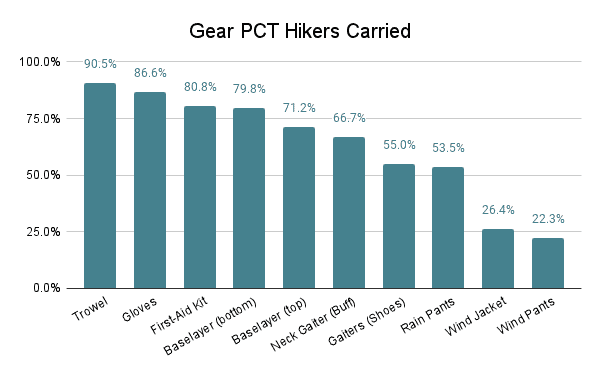
Luxury Items
Pacific Crest Trail hikers obsess over their gear lists and what goes into their packs, but most everyone has something that could be considered a luxury item by someone else. Some people believe their phone to be an essential and multifunctional piece of gear while others may scoff at the idea of using one to take photos, listen to music, and use GPS in the wilderness.
In the thru-hiking community, the term “luxury item” can mean a lot of different things depending on who you’re talking to. Essentially, it’s anything not necessary for your trip. However, what’s considered to be necessary can change a lot depending on who you’re talking to.
Here are the most popular “luxury items” on the trail this year.
- 93.8% – Battery Pack
- 59.3% – Pillow
- 51.8% – Camp Shoes
- 34.7% – Massage Ball
- 31.3% – Towel
- 26.0% – Sleeping Bag Liner
- 21.3% – Journal
- 18.9% – Town Clothes
- 9.6% – Deodorant
- 9.4% – Kindle
- 5.5% – Cards/Game
- 5.3% – Book
- 2.2% – Down Pants
- 1.5% – Fishing Pole
- 0.8% – Ukulele/Guitar
- 0.4% – Frisbee
- 0.4% – Harmonica

Battery Packs
It should be noted that a lot of hikers yelled at me about including battery packs in the “luxury item” category. Perhaps they’ve now officially become a standard piece of backpacking equipment? Feel free to yell at me in the comments and let me know if battery packs should have their own detailed item breakdown in future surveys.
THRU
14,162 mAh
Average battery pack size
(M = 10,000 | σ = 7,008)
Gear Advice
To wrap up this portion of the gear breakdown (posts on couples’ gear and gear broken down by gender are on the way), I have advice from this year’s PCT Class on gear choices and gear lists for future PCT hikers.
- A down jacket in a buff makes a great pillow! Also if you want to optimize your tiny first aid kit, get your Wilderness First Responder so you know what you’re prepared for (you should probably get your WFR anyways before thru-hiking). That said, it doesn’t matter what you’re carrying as long as you’re having fun, so do your own thing and don’t listen to other people too much!
- Certainly do your research and make informed choices but know that gear may change once you’re on the trail. Don’t feel like you have to have everything dialed in and perfect before starting the trail.
- Practice with your gear, I was shocked by the number of people who carried an ice axe, but had NO CLUE how to use it, or more importantly WHEN to use it.
- A fleece is really nice to have on cold mornings in the Sierra and Washington. I found one in a hiker box in Kennedy Meadows. Buy a new filter before trail; I used my old one from start to finish but wished I’d brought a new one. Splurge on a warm sleeping pad!
- Beware the race to ultralight. You need to be comfortable and safe on the trail.
- Be mentally and financially prepared for things starting to break and tear as the trail goes on. In particular, get tent zips fixed at an alteration place in town ($30 for two zippers) instead of fiddling around with it for weeks in mosquito country.
- Do not underestimate how much gear you will need to replace/swap out. I did not expect to go through 7 pairs of shoes, but they kept falling apart after only 300/400 miles (483/644 km). I had tested all my kit extensively but the trail threw me into new situations, where things did not perform as I expected them to. Take the desert sun seriously and strongly consider starting with a sun hoodie and sun gloves. Even if you are a staunch anti-trekking pole person as I was, I would recommend starting with some and saving your knees from the repetitive beating of day-in-day-out hiking.
- Frogg Toggs suck when a storm actually hits. Get an actual rain jacket.
- Don’t worry about base weight nearly as much as online comments would have you believe you should. A lighter pack will make your life easier, but if an item you want to carry will make or break your happiness on your hike, it’s probably worth the weight. My base weight was high the whole hike and it was occasionally annoying, but there wasn’t anything in my pack I wanted to do without, so I didn’t. Rather than cutting weight based on internet comments, determine if the item is really worth the weight to carry it and be willing to reevaluate while you’re on your hike and send things home/ leave them behind, or even just send them ahead so you can have them back if you change your mind.
- It feels to me that “thru-hike” and “ultralight” are becoming synonymous. However, I certainly don’t feel as though this needs to be the case. Being “ultralight” is not a requirement to complete a thru-hike. Many hikers on trail and strangers in town would comment on my large pack. But hey, I absolutely LOVED my down pants, my big ass battery bank (so I could watch The Office in my tent at night), and nightly Hostess Cupcakes (those babies took up a decent amount of room in my food bag). I didn’t carry excess items that I didn’t use, but I also didn’t hesitate to carry items that brought me joy and made my hike more enjoyable. While my pack was certainly heavier than most, I still carried that sucker from Mexico to Canada and it never slowed me down.
For more on gear, check out the Ultimate Pacific Crest Trail Packing List.
Support the Survey
Every year, I get a lot of people asking how to support the surveys. Beyond sharing them with your close-knit bubble of weird hiker friends, the best way to support the survey is to contribute via Patreon. You’ll get access to exclusive posts, discount codes, live streams, and super, extra cool stickers so that everyone will know how cool you are.
If you’re not into Patreon, that’s cool; you can Venmo @halfwayanywhere, Cash app $halfwayanywhere, or PayPal moc.erehwynayawflah@tcatnoc
This is not expected. The data collected in the survey will always be free and accessible to everyone who wants/needs it. Your support is much appreciated and helps pay the website (and survey) bills.


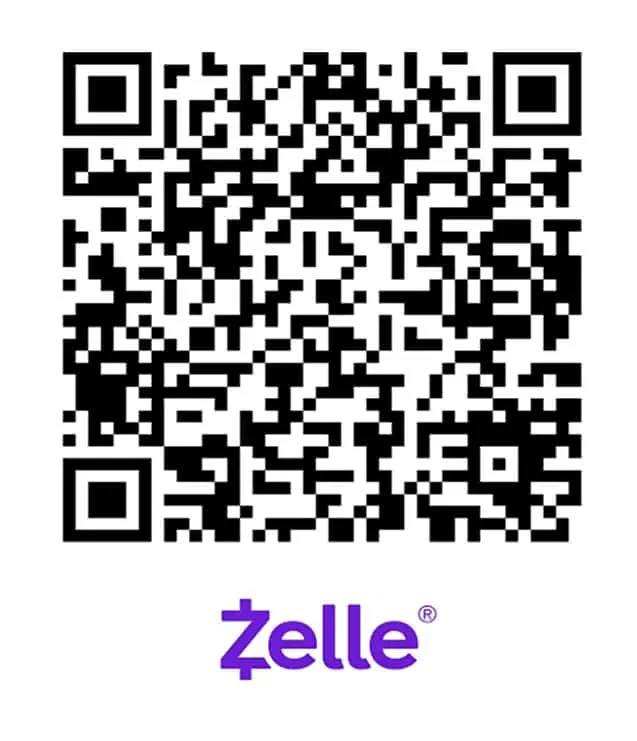
Pacific Crest Trail Survey Collection
If there is anything you can think of that would make this information more useful (or any more gear-related cross-referencing you would like to see), then please leave a comment below and let me know.
Affiliate Disclosure: This page may contain affiliate links, which means I may receive small commissions for purchases made via these links at no additional cost to you. This helps pay the bills and keep the site up and running. Thank you for your support!
